posing them — or local wildlife — to danger, and their rising popularity means designs now span tiny window boxes to walk-in garden retreats. Research shows catios reduce vet bills, protect birds, and give guardians priceless peace of mind. Below are 25 fresh, practical ideas — each about 100 words — to spark your own feline haven. Pick one that fits your space, budget, and DIY comfort, then adapt the details (materials, layout, décor) so both you and your whiskered roommate can enjoy the breeze together.
1. Cedar Cube Backyard Catio
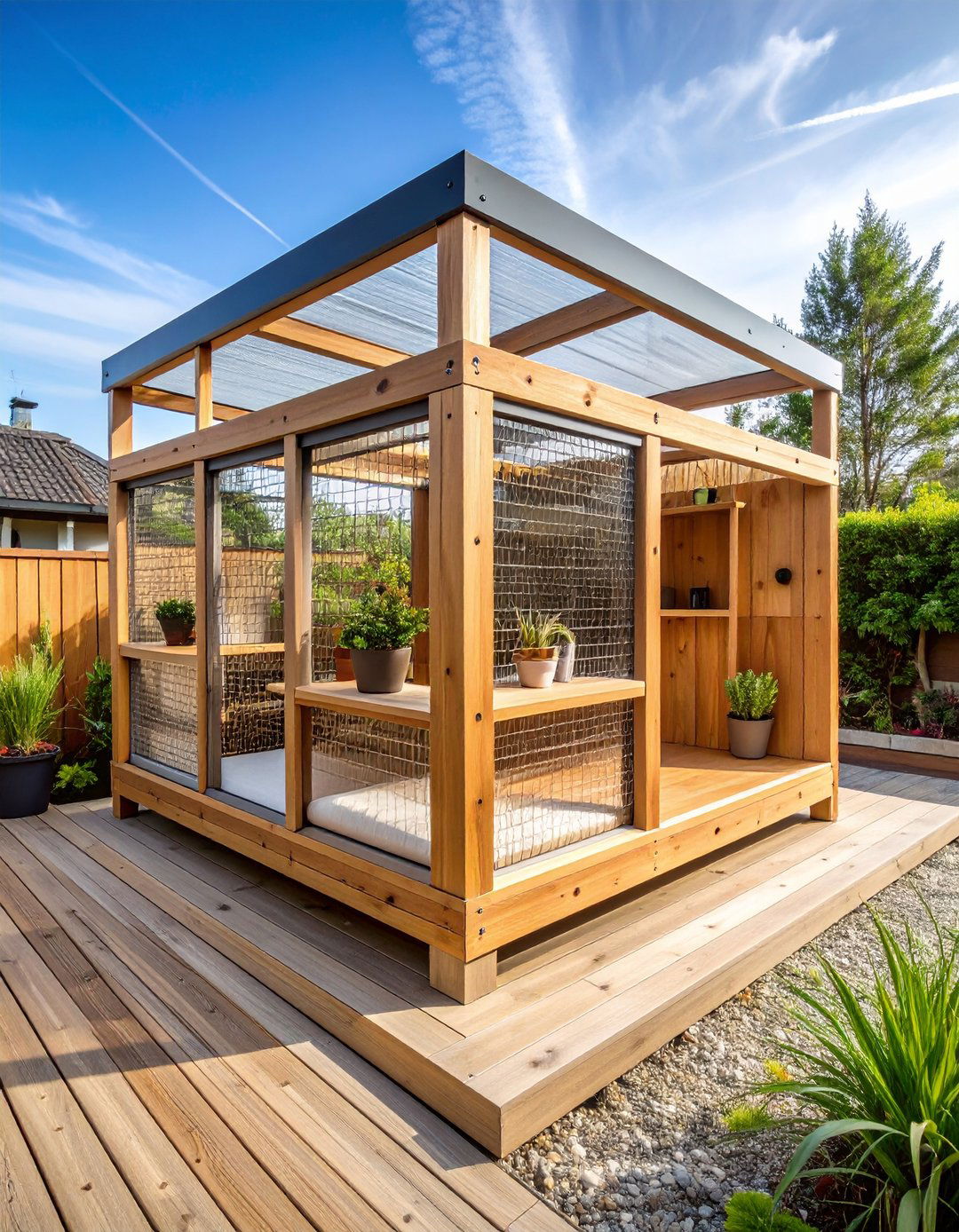
A sun-warmed cedar cube catio instantly adds safe outdoor territory while blending with deck boards or garden beds. Cedar’s natural oils repel insects and resist rot, letting the enclosure last decades with minimal upkeep. Frame a 6-×-8-ft cube from 2×4 cedar, attach 16-gauge galvanized hardware cloth on three sides, and mount wide cedar shelves at varying heights for climbing. Leave one wall open to the house and install a lockable cat door for easy access. Top with clear polycarbonate so light pours in yet rain stays out, and anchor the base with pavers to keep digging critters at bay.
2. Window Box Catio for Sills
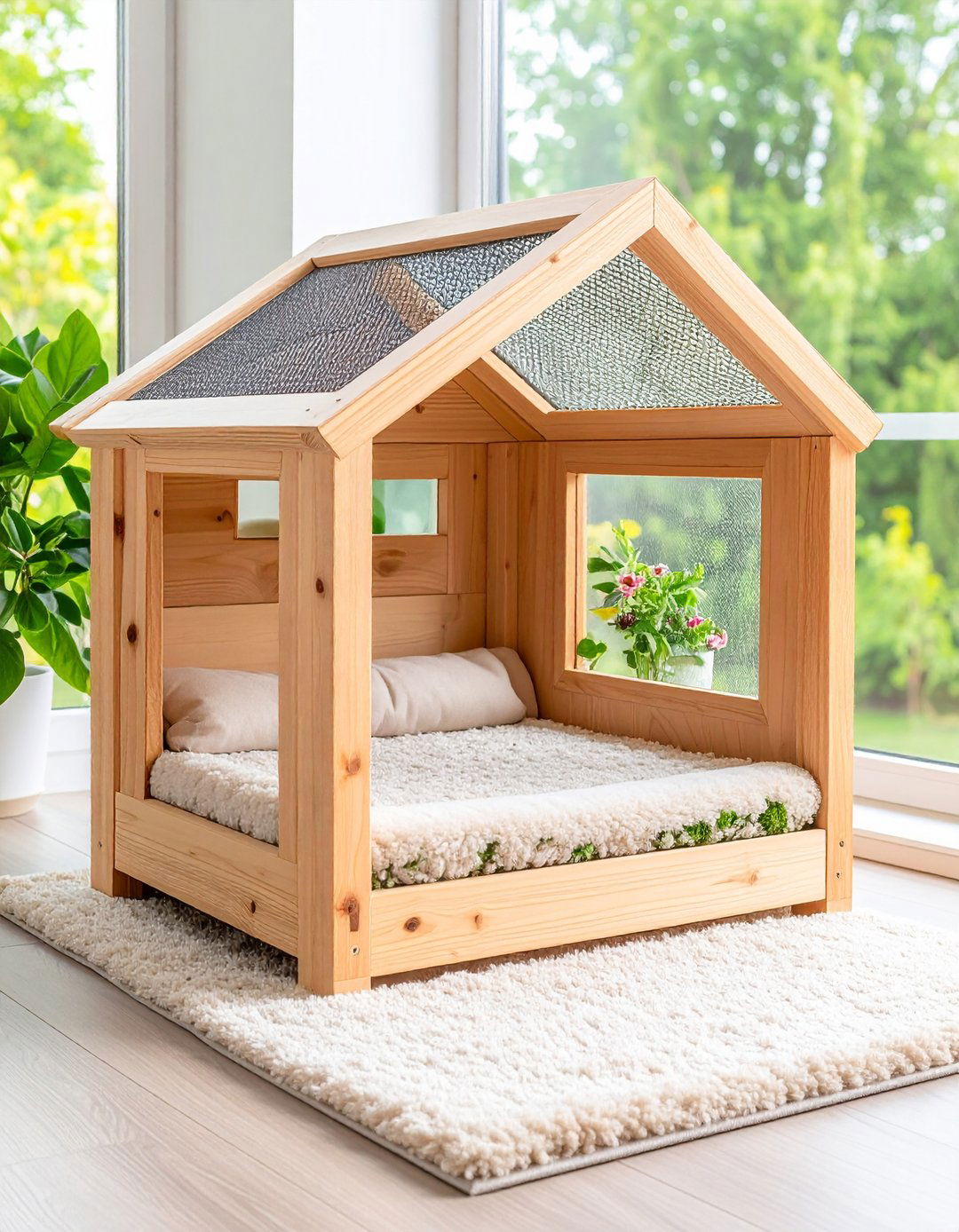
A compact window-box catio lets apartment dwellers give indoor cats fresh air without sacrificing floor space. Plans from Catio Spaces show a three-sided wooden box that brackets under the sill and supports a mesh-roofed deck where cats can perch and watch birds. Build the frame from 1×3 lumber, pre-paint to match trim, then add 16-gauge mesh plus acrylic roofing for weather protection. Make shelves shallow so the sash still opens fully, and line the floor with removable indoor – outdoor carpet for easy cleanup. A simple hook-and-eye latch allows you to remove the box each winter or before inspections.
3. Screened-In Balcony Catio
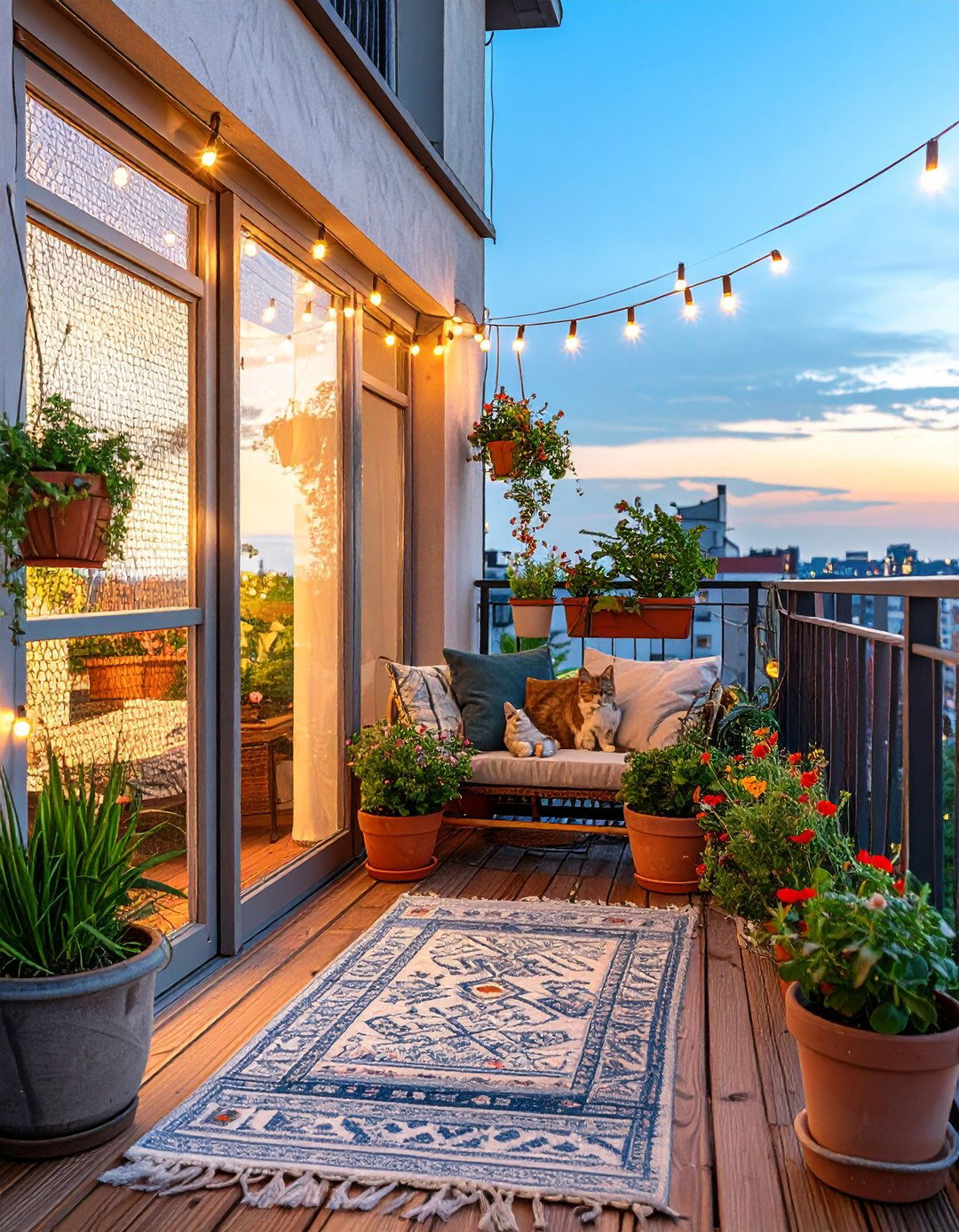
Transform a high-rise balcony into a breezy catio by enclosing the railing line with sturdy, removable mesh panels. K&H Pet’s apartment-catio guide recommends confirming lease rules first, then creating a “floating” frame that doesn’t drill into walls. Use pressure-treated 2×2s to build a lightweight frame, zip-tie 16-gauge mesh, and secure the base with sand-filled planters that double as greenery. Inside, lay outdoor rugs for traction and add cat-safe grass pots for nibbling. String solar fairy lights overhead so evening lounging feels magical for both of you.
4. Lightweight PVC-Frame Catio
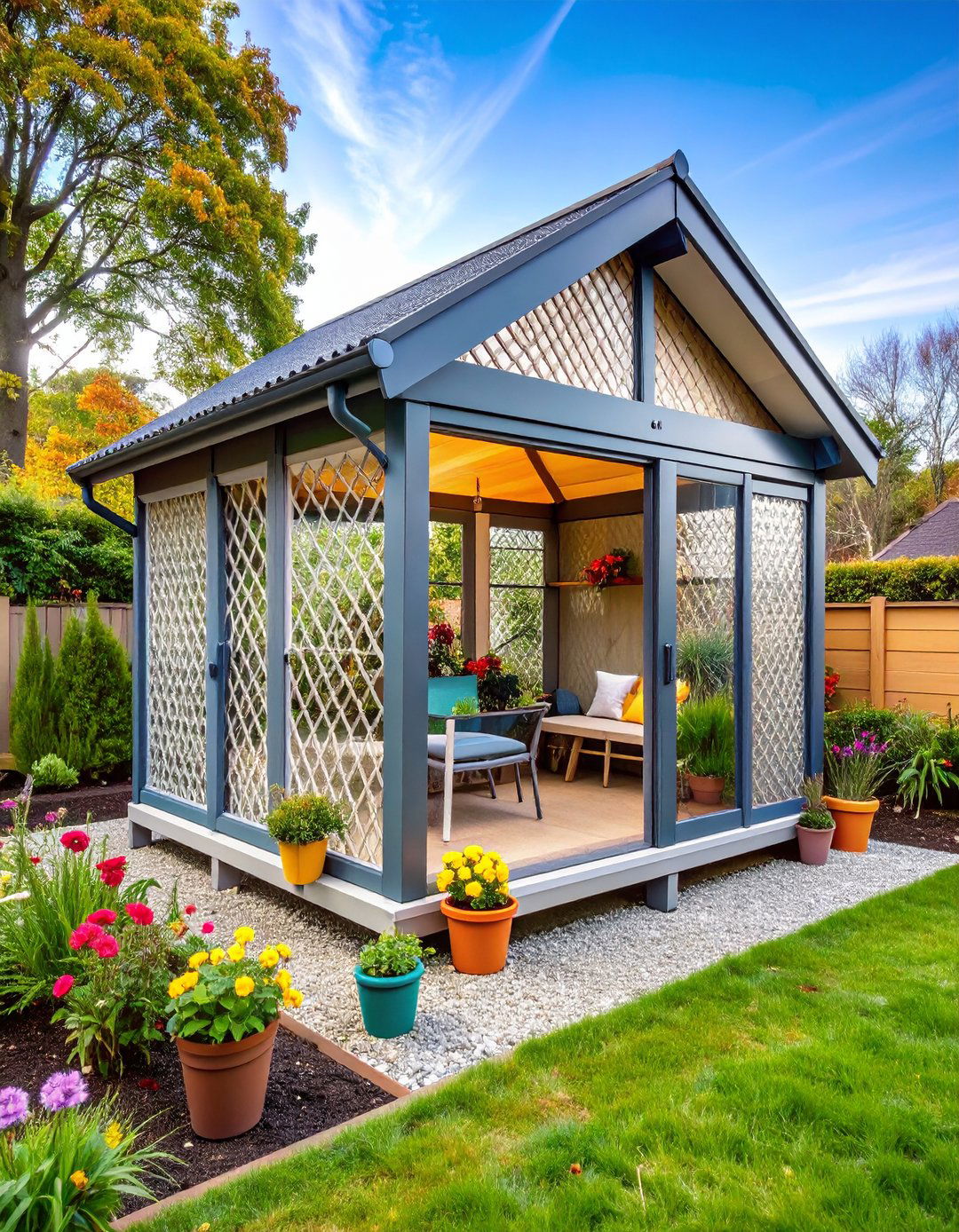
PVC pipe catios are budget-friendly, rust-proof, and simple to reconfigure. One DIYer on Reddit shared a multi-level design built entirely from 1-in. Schedule 40 pipe, three-way fittings, and plastic lattice panels. Cut sections with a ratcheting pipe cutter, tap joints together, then wrap the frame in galvanized mesh using UV-rated zip ties. Because PVC flexes, keep spans under four feet and add diagonal bracing in windy zones. Snap-in shelf brackets support plywood platforms coated with exterior paint. When moving day comes, the whole catio knocks down into flat bundles in minutes.
5. Expandable Wire-Panel Kit Catio
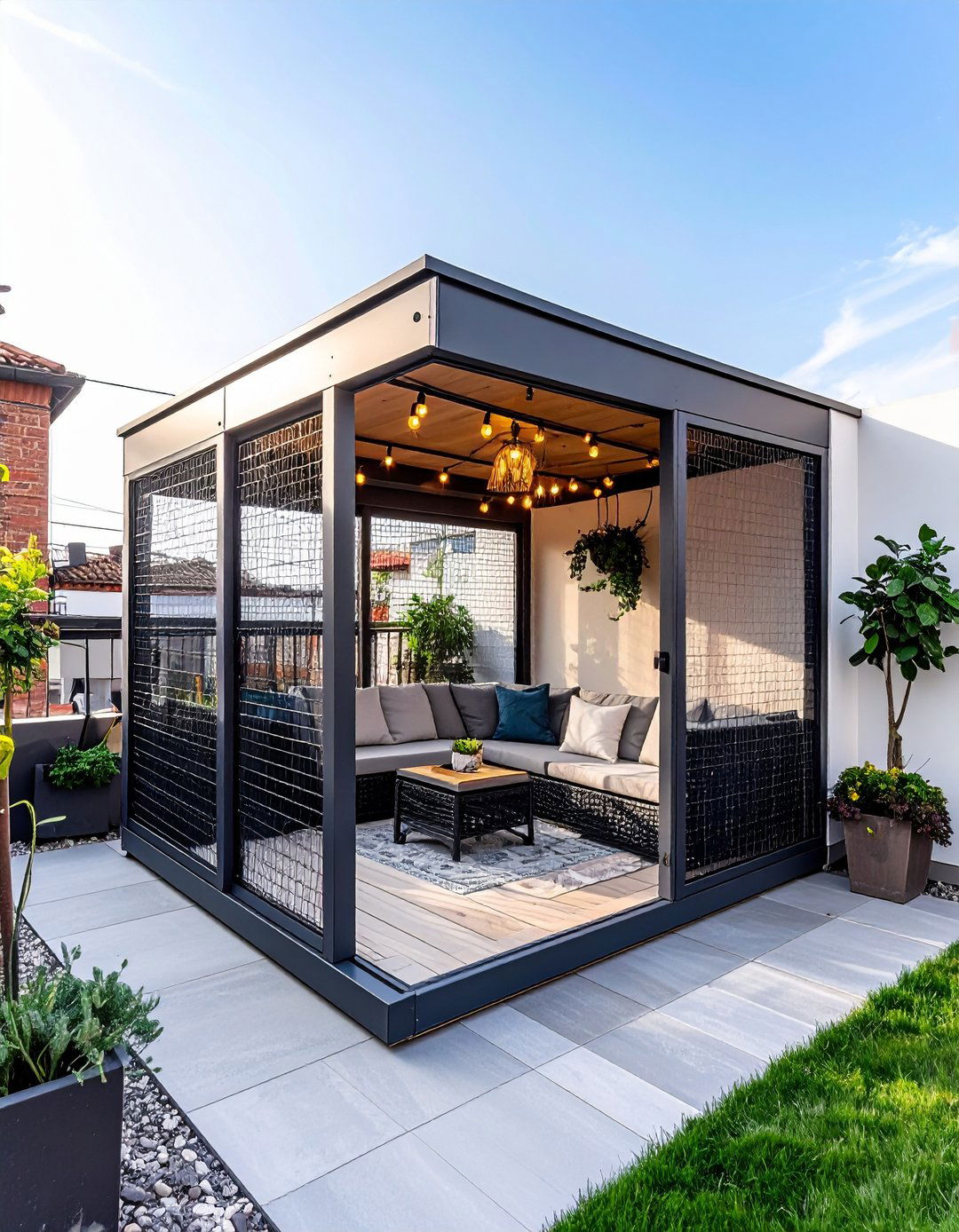
If DIY framing feels daunting, modular steel kits like Omlet’s Cat Balcony Run offer plug-and-play panels that fit almost any terrace. Each powder-coated section bolts together with included clips; start with a 6-ft run and lengthen later by adding extra modules. The 3-ft depth lets you still enjoy seating alongside your cat, and optional porch pieces create an “air-lock” for safe entry. Line the floor with interlocking artificial-turf tiles so paws stay comfortable on hot concrete, and clip weatherproof shades across the roof to tame midday sun.
6. Pergola-Top Catio with Fairy Lights
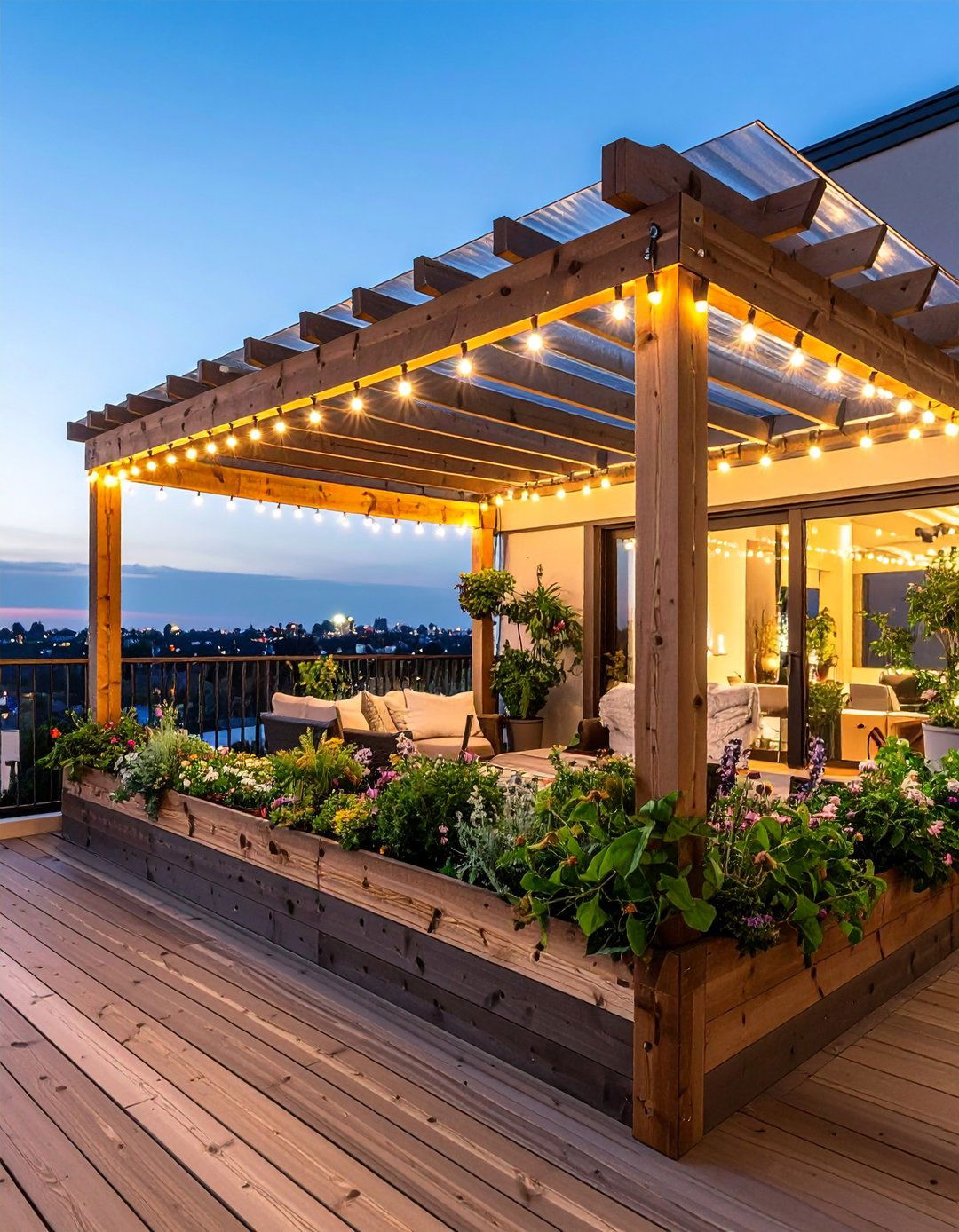
String lights plus a pergola roof turn a simple enclosure into an evening oasis. A Pinterest-featured design frames the balcony parapet, then caps it with clear corrugated panels so cats stay dry while stargazing under twinkle bulbs. Build a 2×4 pergola skeleton, add rafter tails for character, and run low-voltage LED strands along the beams. Because roof panels magnify heat, leave two-inch ventilation gaps at the ridge and orient the roof to shed rain away from the building. Wrap cedar planters around the base for herbs that scent the night air.
7. Deckside Haven-Plan Catio
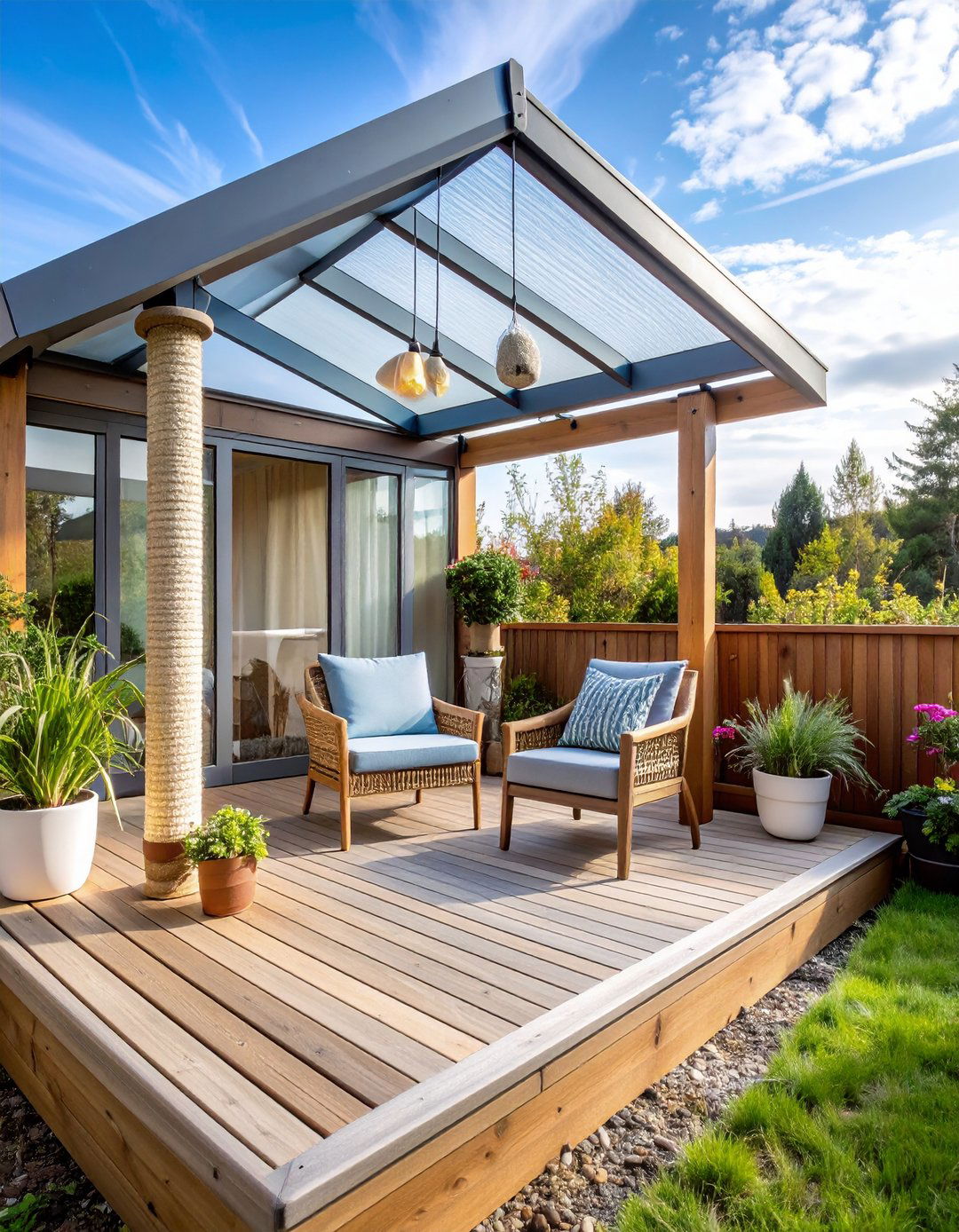
Catio Spaces’ “Haven” blueprint fits snugly on a raised deck, using vertical height instead of square footage. Frame a 3-×-6-ft footprint rising to seven feet, include corner shelves, and add a tall sisal-wrapped scratching post that bolts through the deck boards for stability. Half the roof can remain open under existing porch cover, while the other half receives polycarbonate to shield litter boxes from drizzle. Add a human-sized chair beside the mesh wall so you can sip coffee while your cat sunbathes.
8. Tunnel Catio Linking Two Rooms
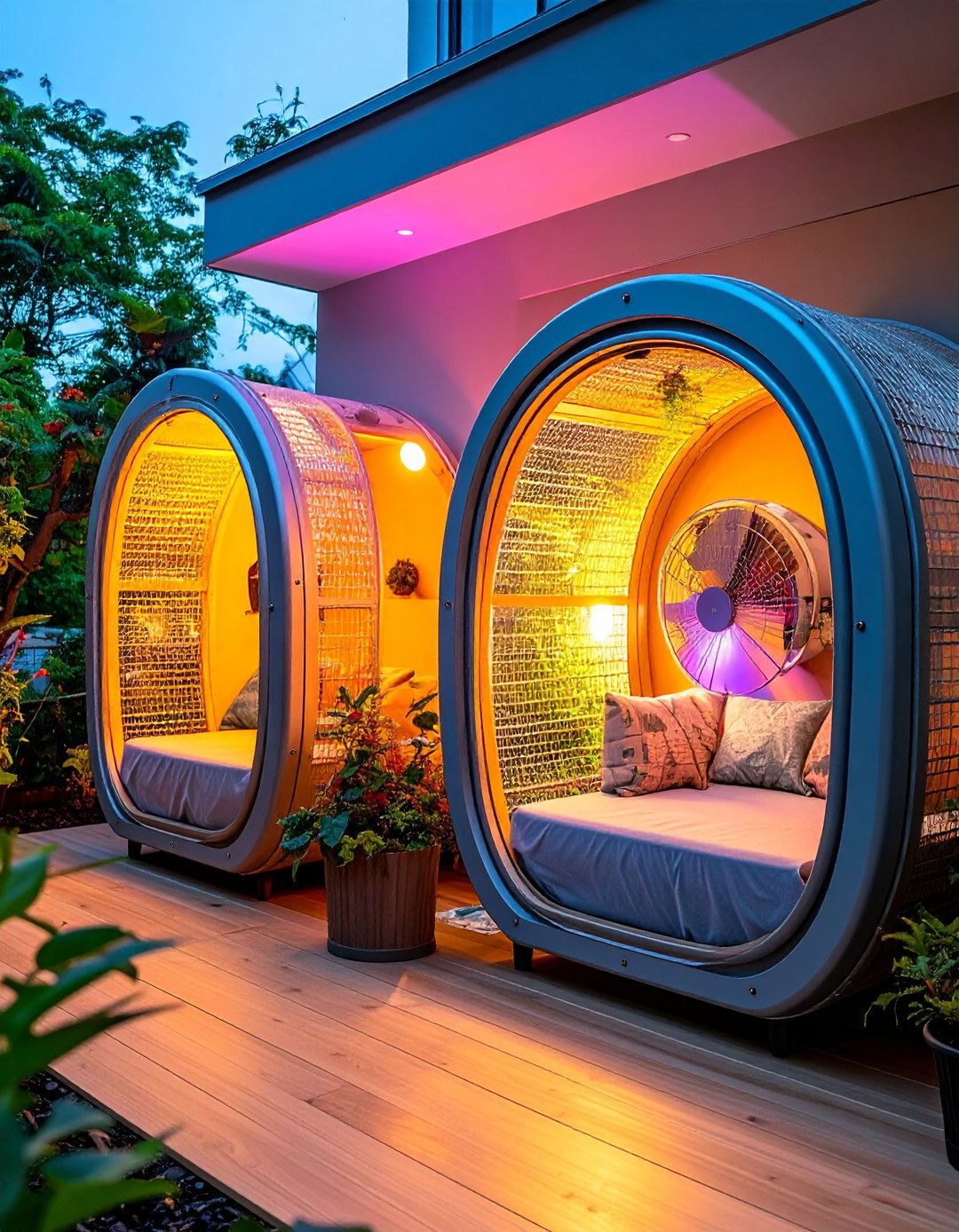
Connecting two indoor rooms with an outdoor tunnel catio adds enrichment and a fresh vantage point. Use 16-in-high galvanized wire tunnels — Chirpy Cats recommends pre-building removable sections so humans can still mow lawns beneath them. Anchor each segment on paver stones, hinge the lids for cleaning, and plant climbing vines nearby for shade. A slim solar-powered fan at the far end moves air through the tunnel and discourages insects. At night, low-wattage LED puck lights glow softly to guide feline explorers.
9. Elevated Cat Bridge Add-On
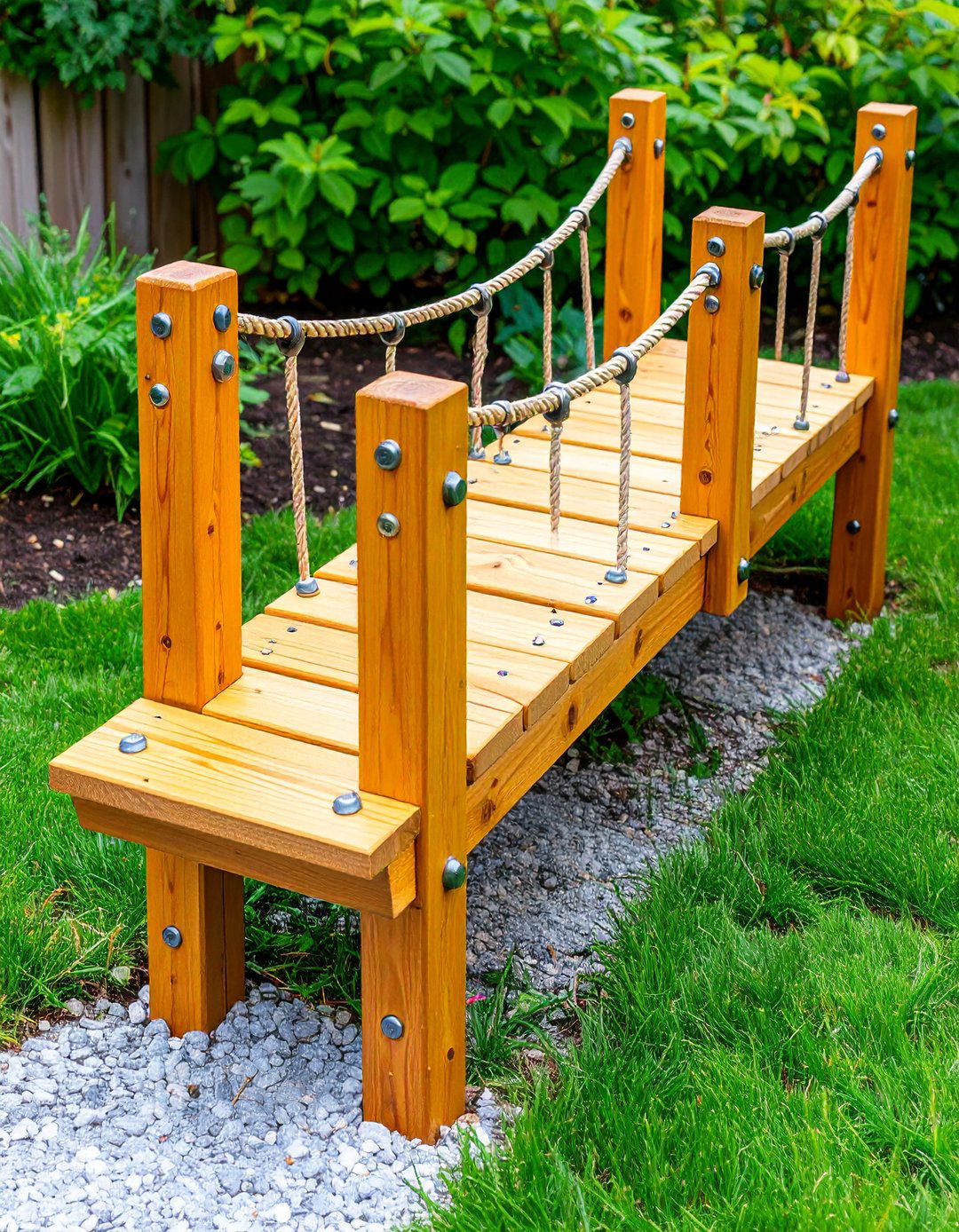
Suspended bridges satisfy a cat’s urge to perch high while linking existing catios or trees. Catster outlines several DIY rope-bridge plans that use 1×6 planks, sisal rope, and shelf brackets. Fasten heavy-duty eye bolts into sturdy posts, weave the rope sides, then screw planks every ten inches to create sure-footed steps. Keep the span under six feet unless you add a mid-support arch. Weatherproof the lumber with exterior-grade sealer and replace rope annually if fraying appears.
10. Cedar-Shelf Vertical Play Catio
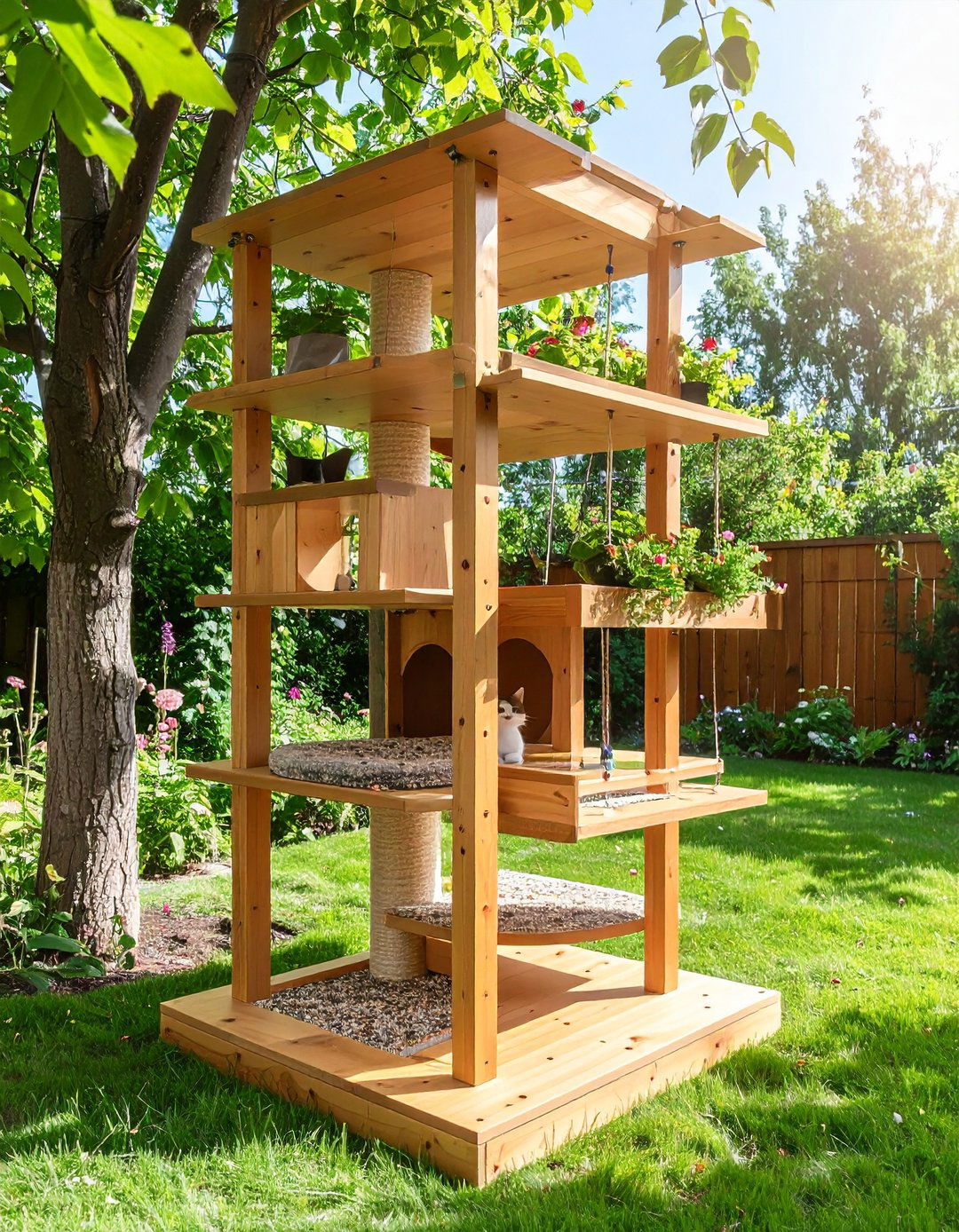
Cats relish vertical territory, so outfit any catio with staggered cedar shelves. Habitat Haven sells pre-sanded corner shelves and planks that resist moisture and smell pleasantly woody. Mount shelves no more than 18 inches apart so older cats can climb safely, and vary depths — 12 inches for lounging, 6 inches for stepping. A narrow ladder of offset shelves up one wall creates a “sky highway” to a top observation perch. Seal shelf edges, then sprinkle catnip on launch day to encourage exploration.
11. Walk-In Sanctuary Catio

When you have multiple cats — or simply crave a retreat you can share — scale up to a walk-in “Sanctuary” catio measuring 8×10 ft. DIY success stories show guardians painting the frame to match brick facades and adding garden branches for naturalistic climbing routes. Pour concrete pavers as a floor to deter digging pests, but leave a two-foot strip of soil along one edge for cat-safe grasses. Include a double-door entry vestibule for escape prevention and hang wind chimes outside so sound enrichment arrives on every breeze.
12. Garden Oasis Catio with Planters
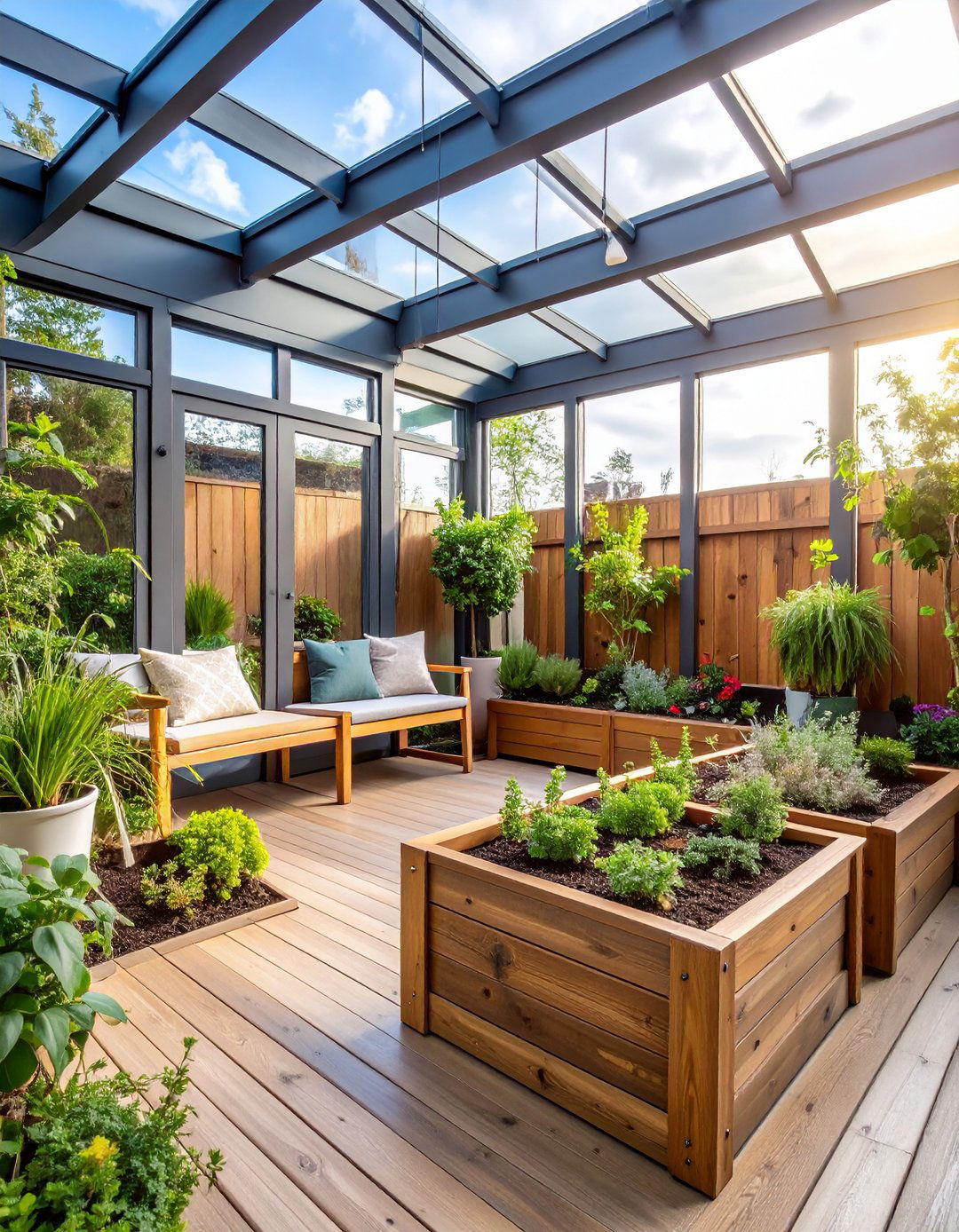
Turn the catio into a mini conservatory by integrating raised planters. Cats adore munching on wheatgrass, catmint, and lemongrass — plants that also repel mosquitoes. Catio Spaces’ Oasis plan carves out an 8×8 garden room where planters flank interior benches. Build boxes from untreated cedar, line with pond liner, and fill with organic potting mix. Reserve one planter for creeping thyme; its scent wafts through mesh as paws brush against it. Just be sure to avoid toxic species like lilies when selecting greenery.
13. Predator-Proof Tall Catio

If coyotes or raccoons roam your neighborhood, height and heavy-gauge mesh matter. One owner built a narrow, eight-foot-tall catio to keep Finn safe after losing previous pets to predators. Use 16-gauge hardware cloth (never chicken wire) secured with exterior staples every four inches, and bury an L-shaped wire apron 12 inches underground to block digging. Install a locking keyed handle on the human door and add motion-sensor lights around the perimeter to discourage nighttime visitors.
14. Sensory Deck Catio for Special-Needs Cats
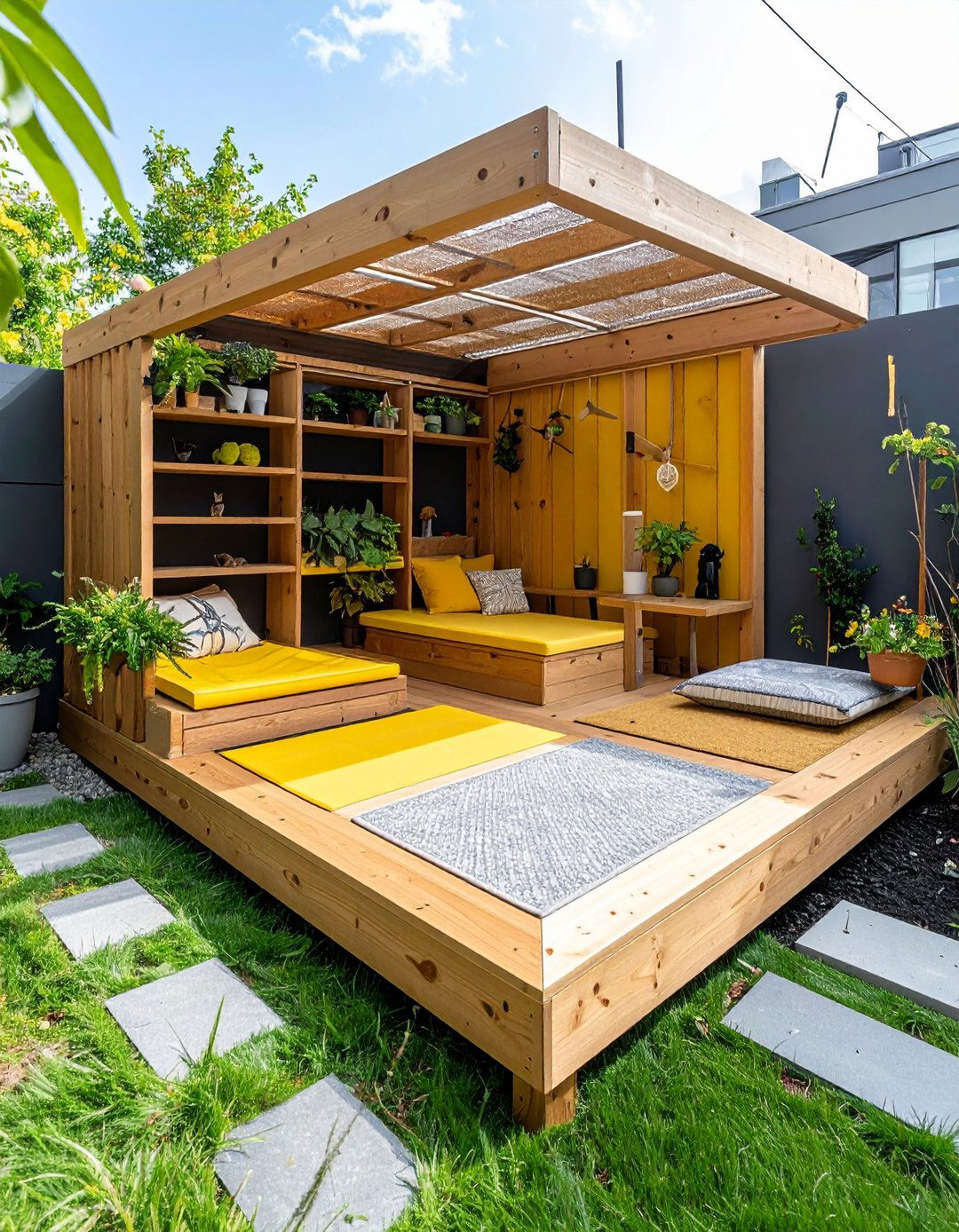
Visually impaired or senior cats thrive in structured spaces. A guardian adapted the Haven plan with wider shelves and textured mats so blind cat Danica could explore safely. Layer contrasting surfaces — outdoor carpet, sisal, smooth wood — so paws read their location. Suspend wind spinners just outside the mesh for auditory enrichment, and plant scented herbs at nose level. Keep furniture arrangement consistent to build a mental map and fit a soft ramp instead of steep steps.
15. Pop-Up Mesh Tent Catio
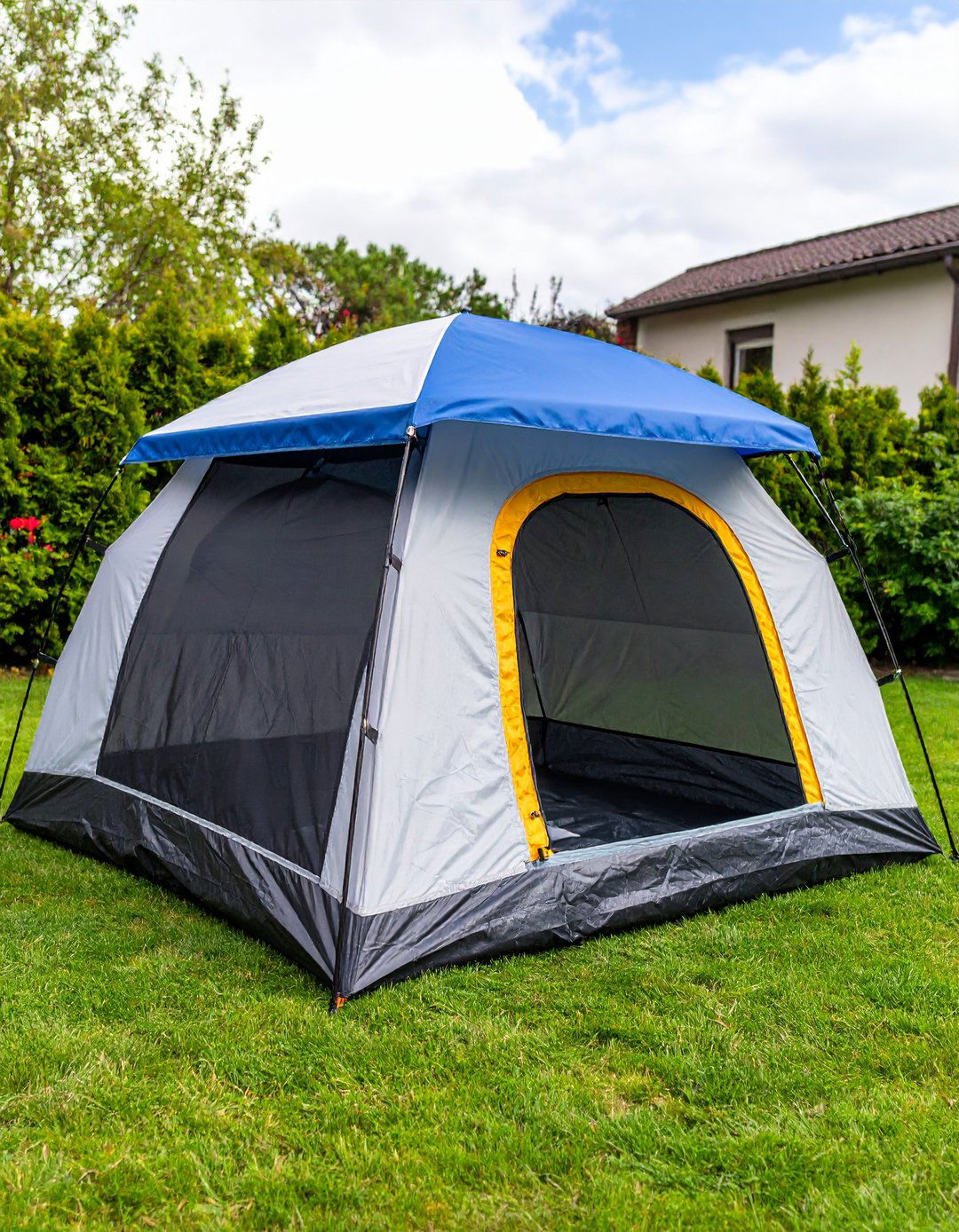
For camping trips or backyard picnics, a collapsible mesh tent catio delivers instant security. Choose a model with fiberglass poles and stake-down loops, then lay a waterproof tarp underneath to stop damp grass from seeping through. Because mesh gauges vary, line the lower two feet with 16-gauge hardware cloth panels attached by zip ties for claw resistance — a tip drawn from Catio Spaces’ material guidelines. Always shade half the tent with a reflective emergency blanket so your cat can self-regulate temperature.
16. Renter-Friendly Removable Panel Catio

Apartment rules often forbid drilling, but you can still build a sturdy catio using compression-fit lumber between balcony floor and ceiling. K&H Pet’s article suggests assembling framed mesh panels indoors, then sliding them into place and locking with adjustable furniture-leveling feet. Seal the top and base with weather-strip to block insects; because nothing’s permanent, your deposit stays safe. When you move, unscrew the feet, fold the panels, and take the catio to your next home.
17. Hybrid Human-Cat Lounge Catio
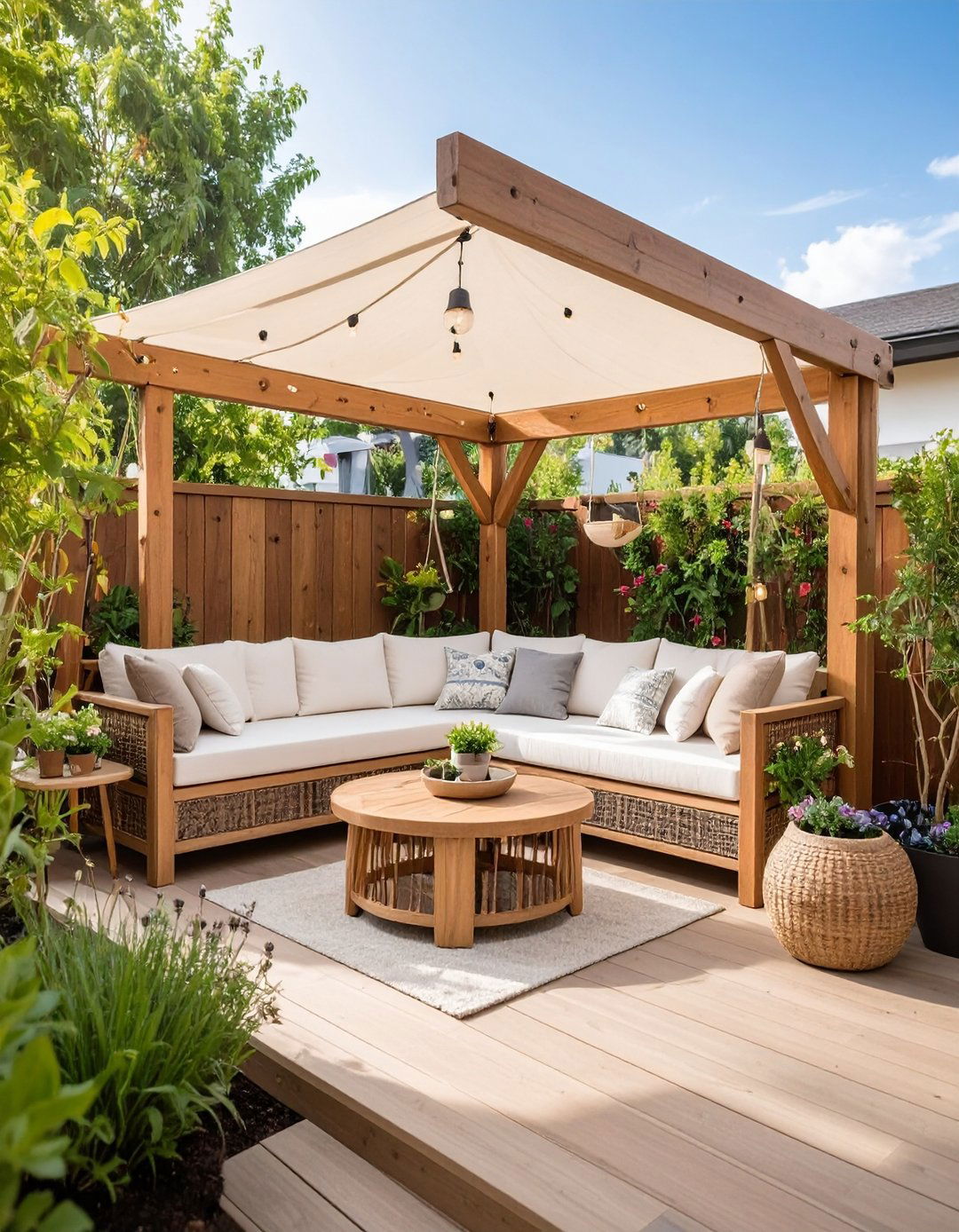
Merge relaxation zones by designing a catio that welcomes you too. Omlet’s balcony enclosure is tall enough for chairs so people and pets share breezes without compromising space. Inside, place a weather-resistant bistro set, add shade sails overhead, and attach a hammock-style cat shelf beneath your seat so whiskers dangle while you read. A small tabletop fountain masks city noise and provides fresh drinking water. Remember to keep electrical cords in chew-proof conduits.
18. Tower-and-Staircase Catio
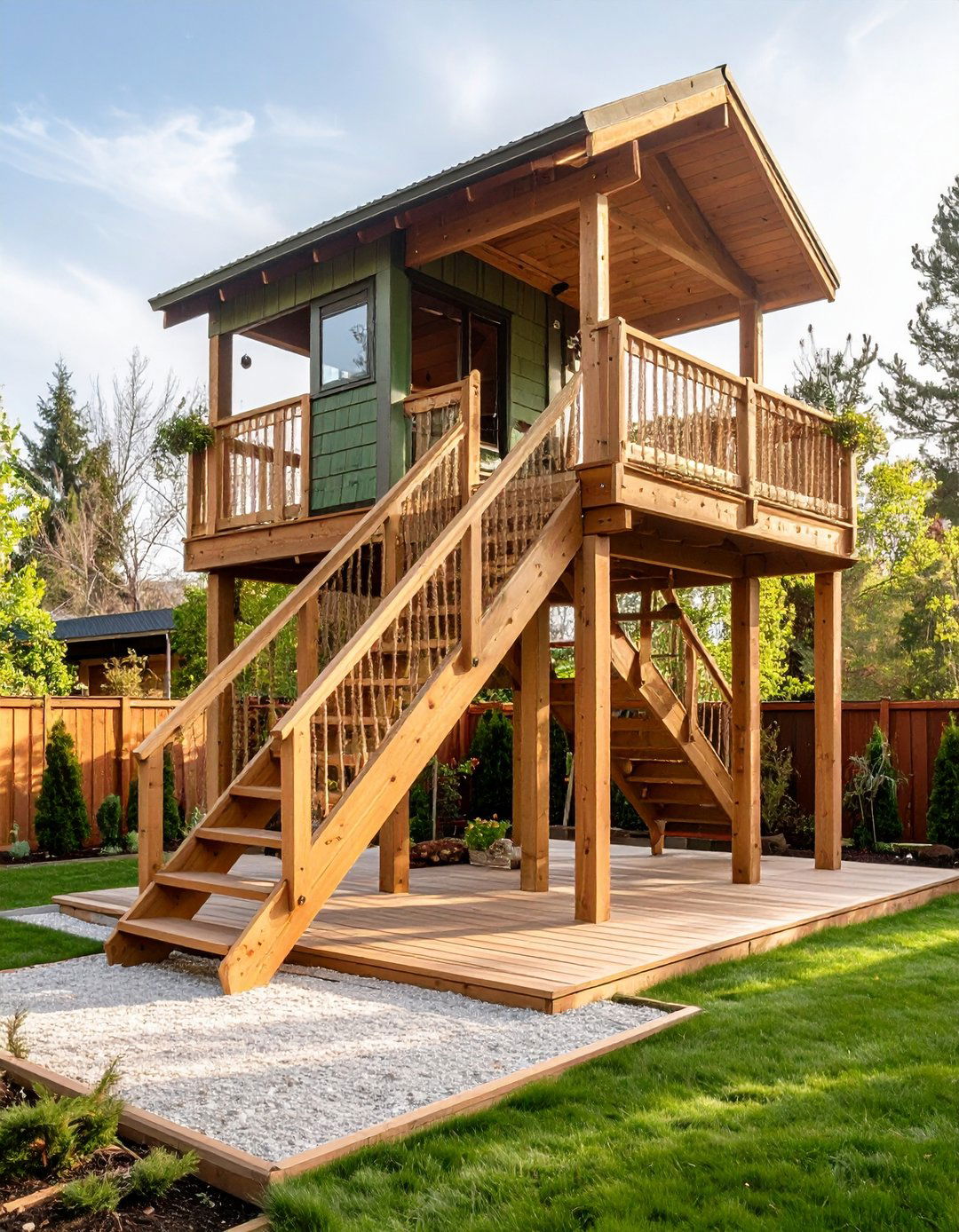
Vertical towers connected by angled staircases create an adventure park inside any enclosure. Habitat Haven sells cedar stairs and rope bridges compatible with their towers, all pre-drilled for quick assembly. Bolt the first tower to deck joists, attach a stair set to a second tower four feet away, and wrap sisal around stair rails for extra scratching fun. Paint contrasting colors — forest-green steps, natural cedar towers — to guide cat eyes during rapid climbs.
19. Rope Bridge Adventure Catio
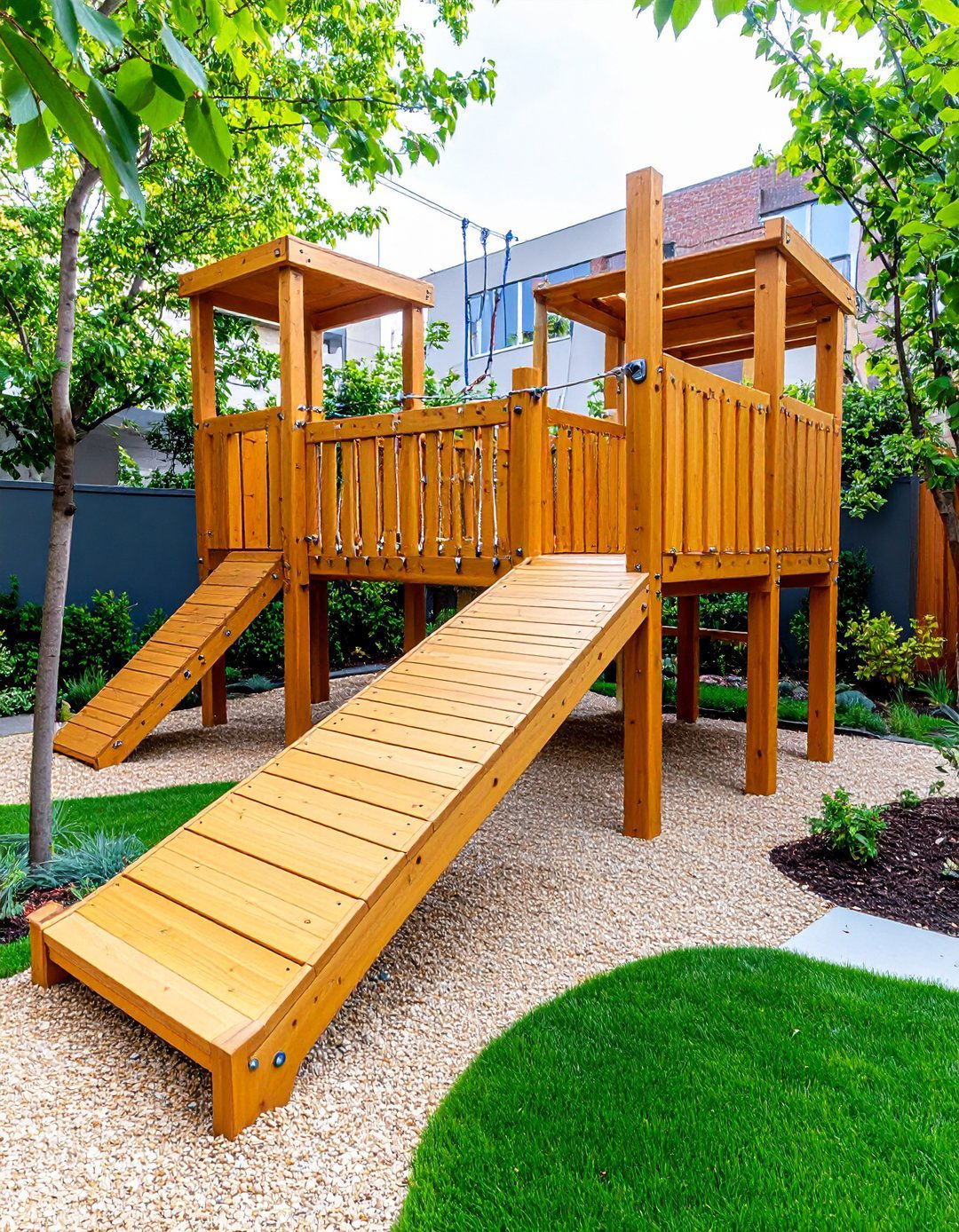
Rope bridges evoke jungle gyms and encourage core muscle work. Catster’s DIY rope bridge uses plywood slats threaded on paracord, then hung between tree trunks or catio posts. Space slats one inch apart so claws grip, and coat wood with non-toxic exterior varnish. Install at a gentle six-degree incline to accommodate older cats. Below the bridge, plant soft groundcover in case of tumbles and add a wobbly stepping-stone path to entice confident explorers.
20. Bird-Safe Catio with Native Plants
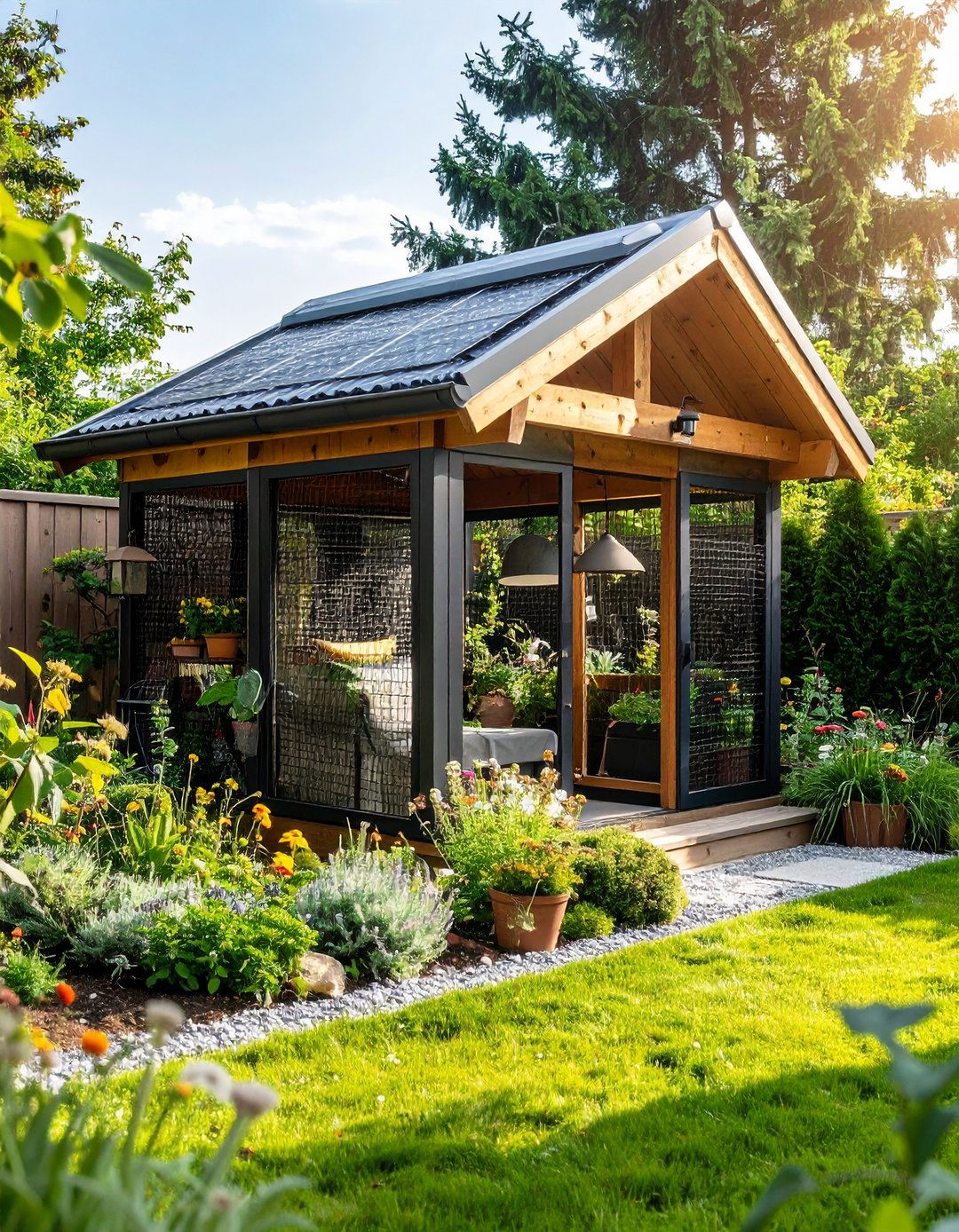
Reducing bird predation is a prime catio benefit. Enhance that mission by surrounding mesh walls with native shrubs that offer birds nectar or berries just beyond paw reach. Choose red columbine or serviceberry for hummingbirds and songbirds, then position feeders five feet outside the catio so cats can watch without harming wildlife. Mount a motion-activated camera to record visits — instant entertainment for you and enrichment for your cat’s hunting instincts.
21. Outdoor Litter-Box Extension Catio
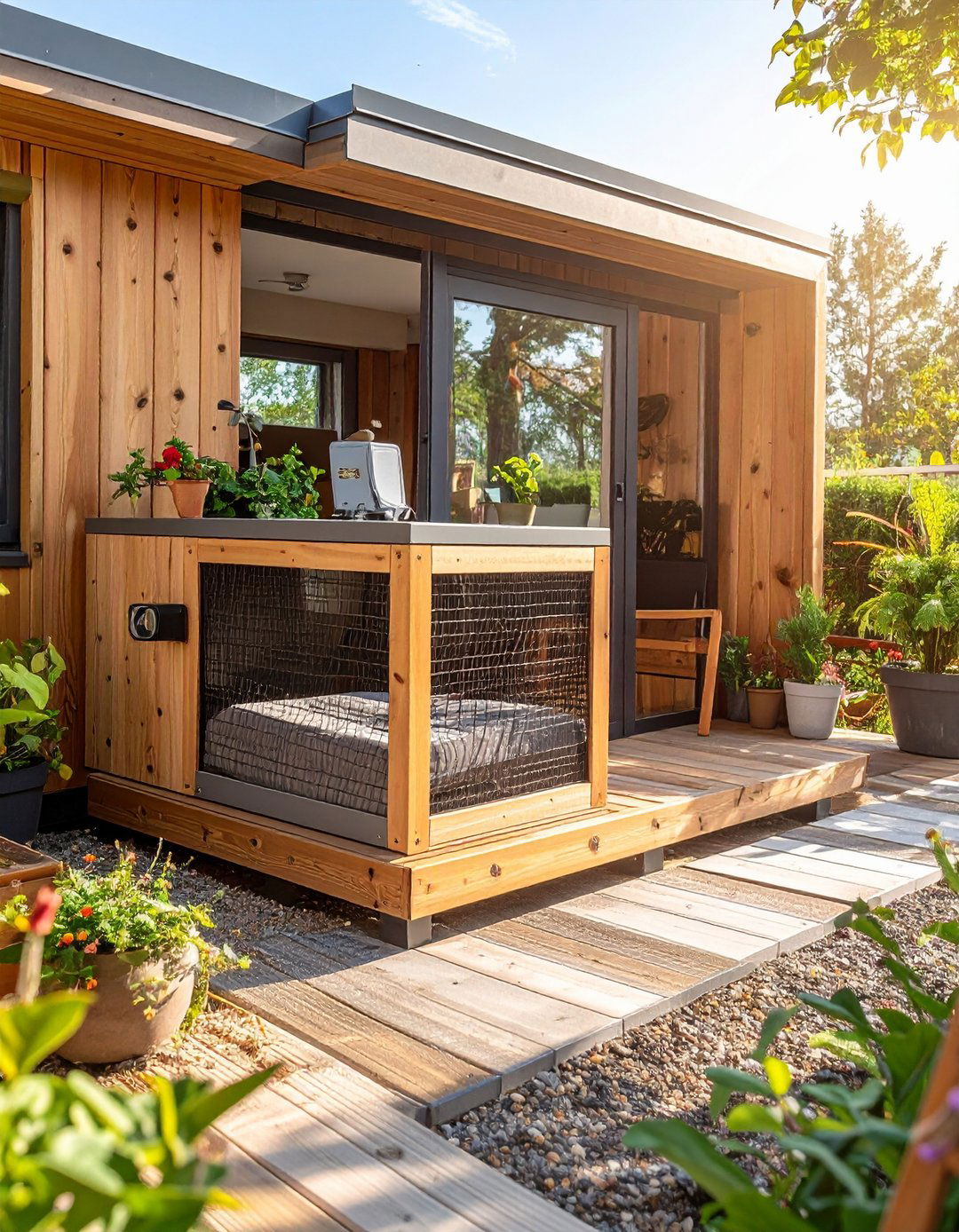
Odor management improves when litter pans move outdoors. Catio Spaces provides downloadable plans for an attached “loo” alcove that mounts under a window box catio. Frame a 2×2-ft cube, line the base with pond liner, and fill with pine pellets that compost easily. A flap door inside the main catio keeps rain out, and a hinged roof lets you scoop without crouching. Add a solar-powered motion light so nighttime visits feel safe.
22. L-Shaped Corner Catio
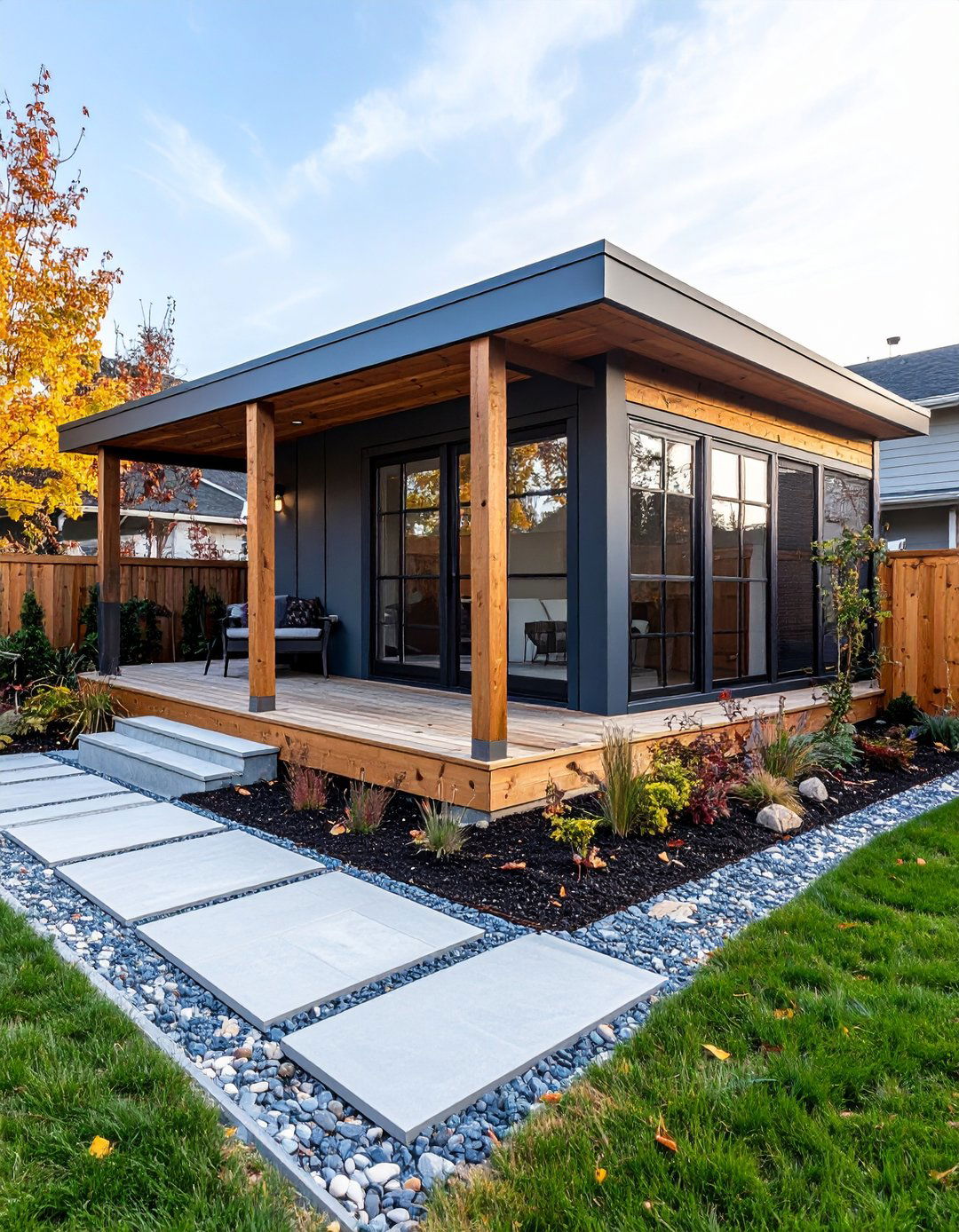
Odd-shaped side yards become usable with an L-shaped catio. Build two perpendicular runs, each three feet wide, then hinge the inner corner for a human gate. Use 4×4 posts at the outer turns to resist racking in wind. Catio Spaces’ small-space guide notes that wrapping around corners maximizes sun patches throughout the day while leaving lawn untouched. Install stepping-stone pavers along the inside perimeter so you can clean without muddy shoes.
23. Green-Roof Shade Catio
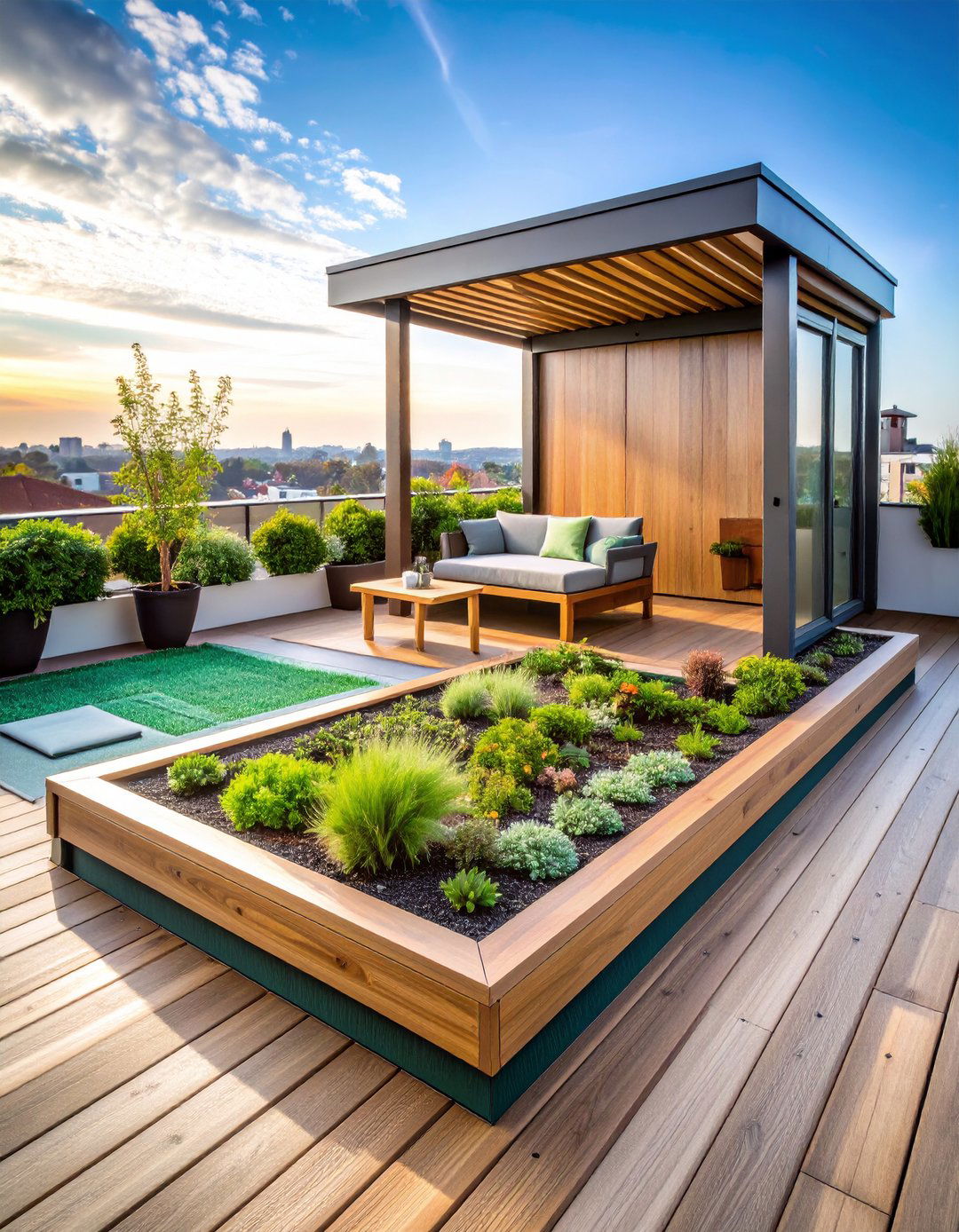
Cover a flat-roof catio with a shallow sedum tray roof to lower summer temperatures and add instant greenery. Sedum mats weigh about 10 lb / sq ft when saturated — within load limits of robust 2×6 framing. Lay EPDM rubber, add edging, then set pre-grown sedum trays. Drip irrigation run by a battery timer keeps plants lush without daily watering. The living roof insulates against winter chill and absorbs rain, cutting runoff. Just ensure root-safe material separates plants from galvanized mesh staples.
24. Solar-Fan Ventilated Catio

In hot climates, passive airflow may not suffice. Mount a 5-W solar panel atop the catio and wire it to a 120-mm brushless fan set into a gable vent. Place a louver on the opposite wall for cross-breeze. According to Catio Spaces’ material article, galvanized wire mesh still allows excellent airflow, but powered ventilation drops temps another 5-10 °F on still days. Clip a mesh guard over the fan so curious paws stay clear.
25. Clear-Panel Winter-Ready Catio
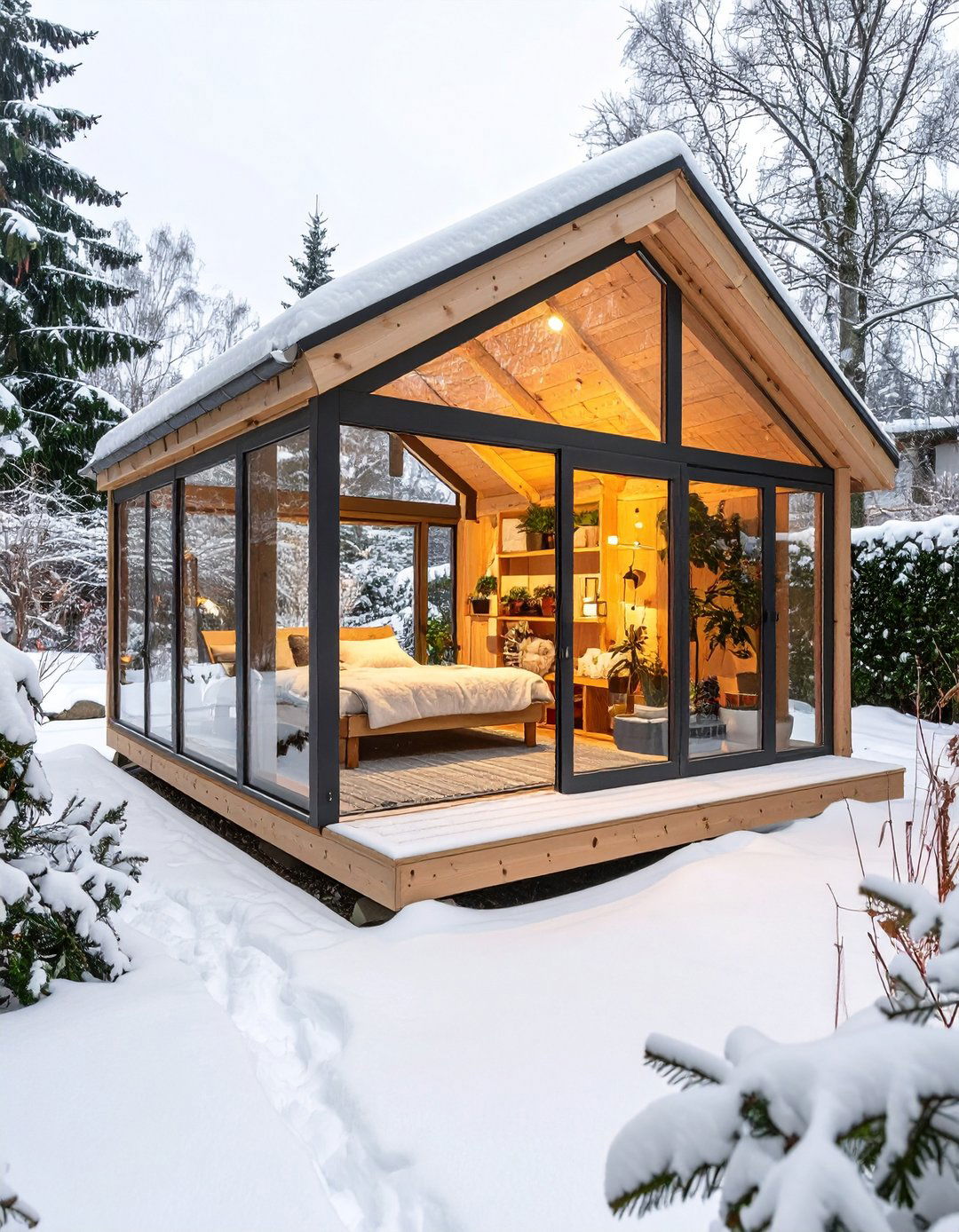
Cold-weather guardians can extend catio season by screwing removable clear acrylic sheets over windward walls. Leave a two-inch gap at the top for condensation escape and drill weep holes along the base. Inside, add a heated outdoor bed rated for veterinary use and cover shelves with fleece. Reports from apartment dwellers who fully screen balconies show that cats still venture out at 30 °F when wind is blocked. Store panels flat in summer to prevent warping.
Conclusion:
Whether you craft a petite window perch or a sprawling garden sanctuary, each catio idea here safeguards felines, enriches their senses, and keeps neighborhood wildlife unharmed. Choose durable 16-gauge mesh, plan shade and ventilation for comfort, and sprinkle vertical routes like shelves or bridges to satisfy climbing instincts. By tailoring materials and layouts to your space, you’ll create a year-round refuge where fresh air, fluttering leaves, and the happy thrum of a purring cat all coexist — proof that the great outdoors and security can, indeed, share one purrfect patio.


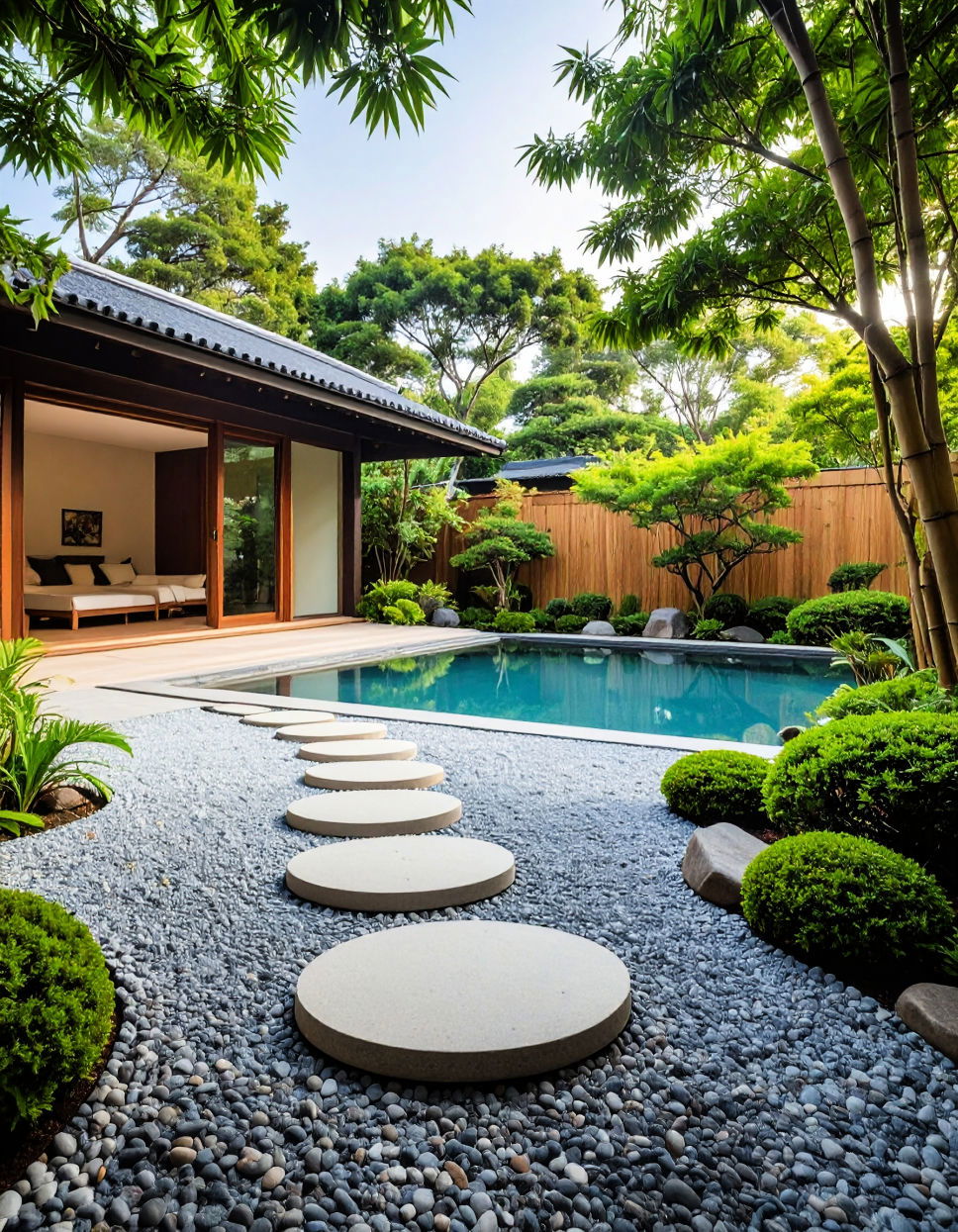

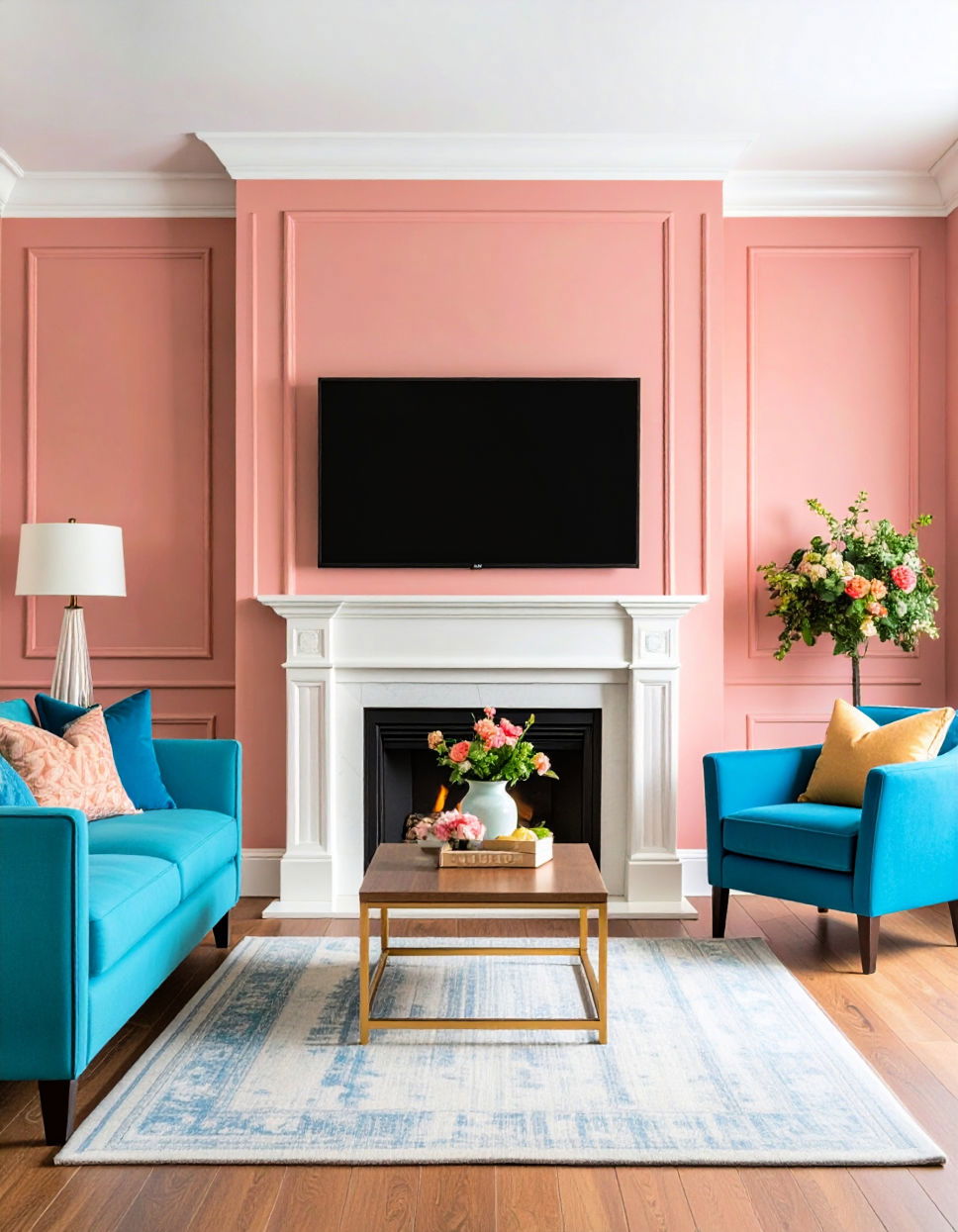
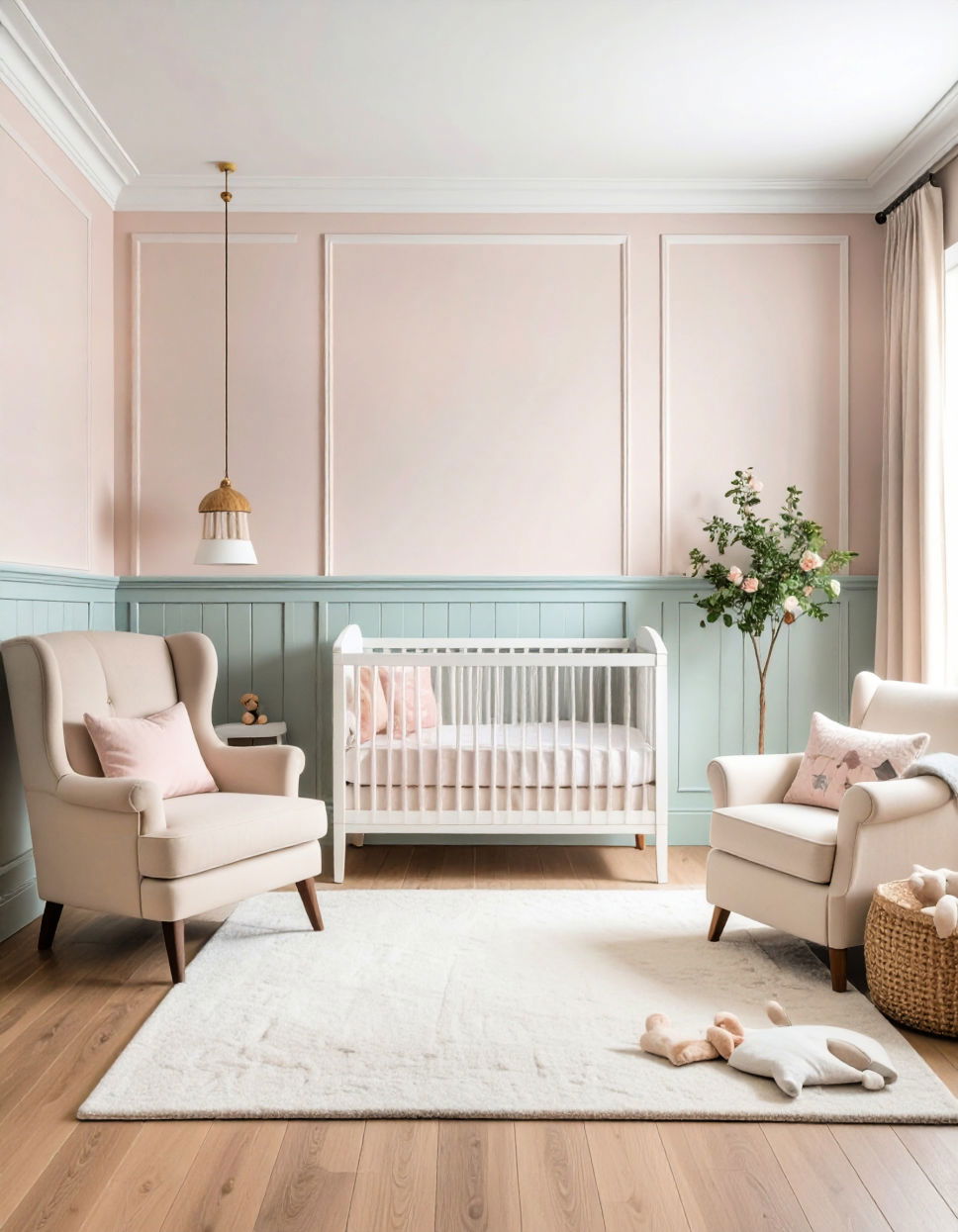

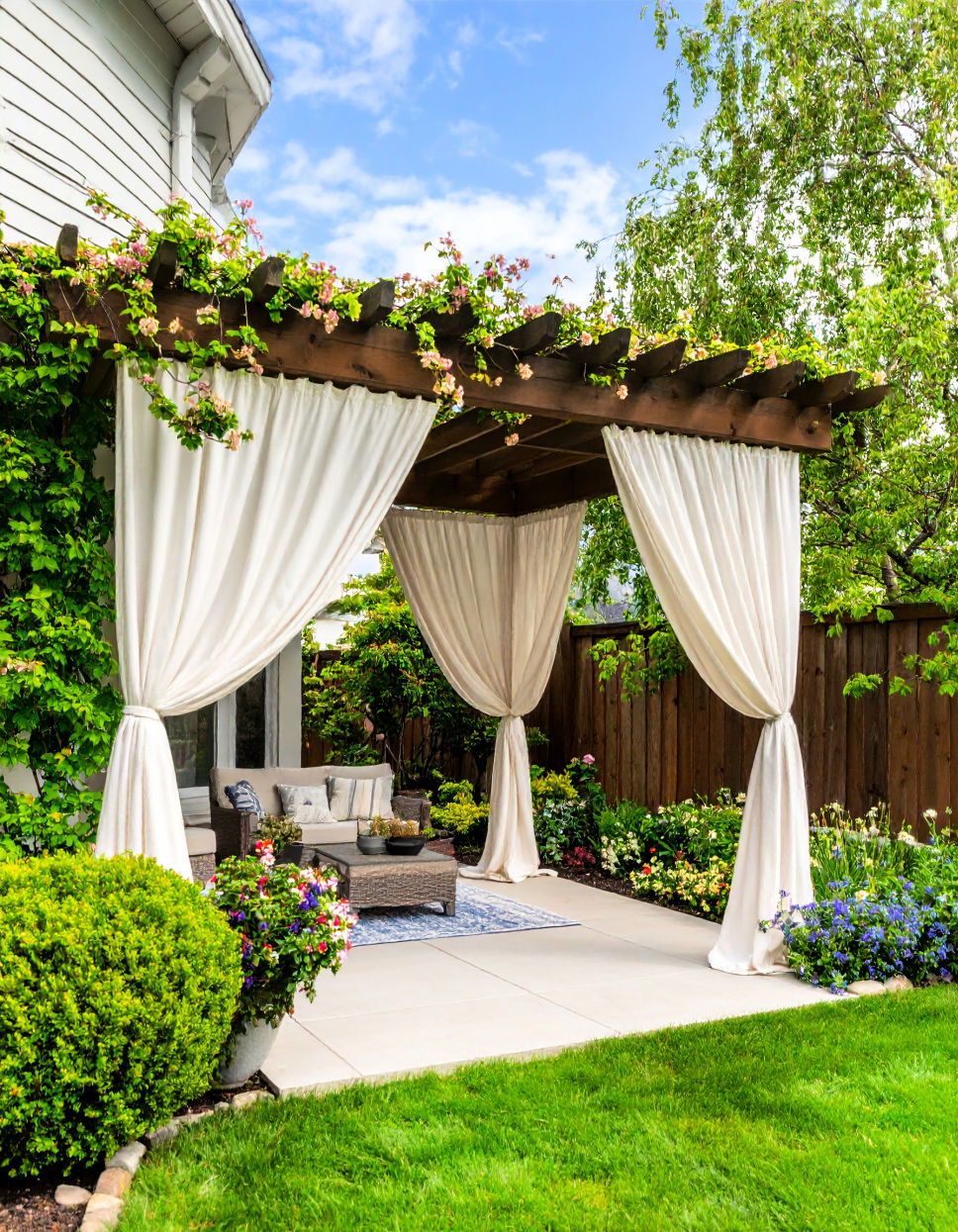
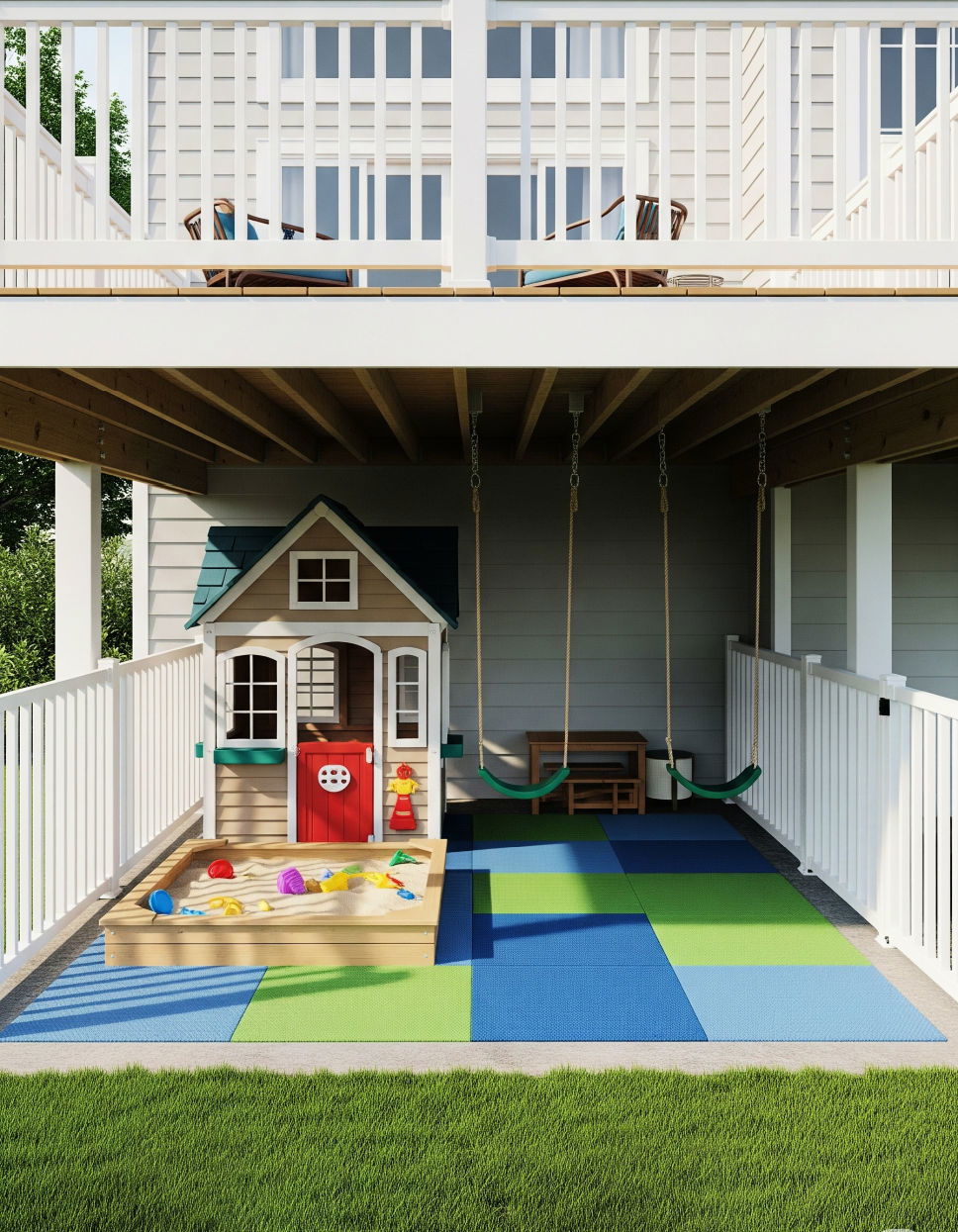
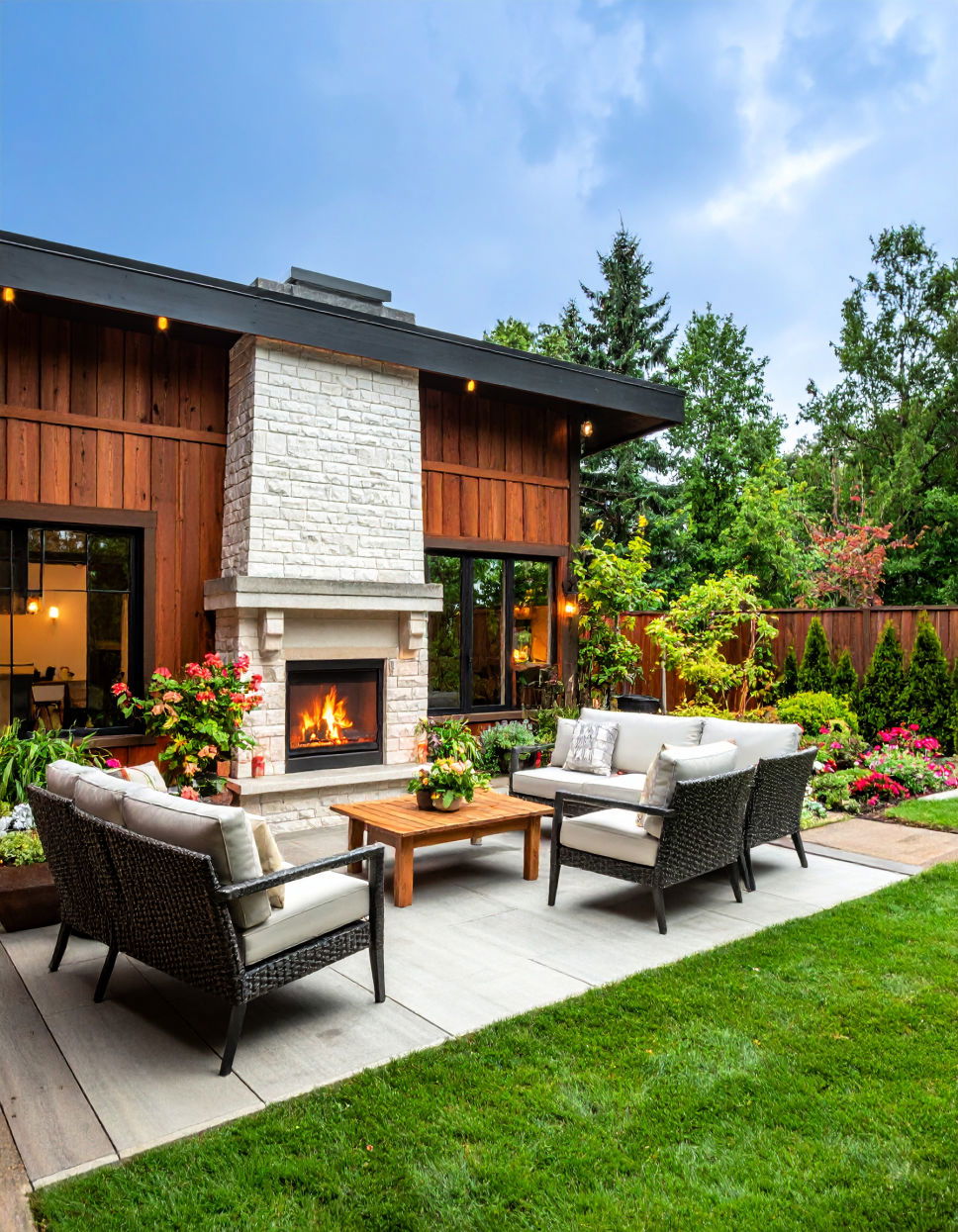
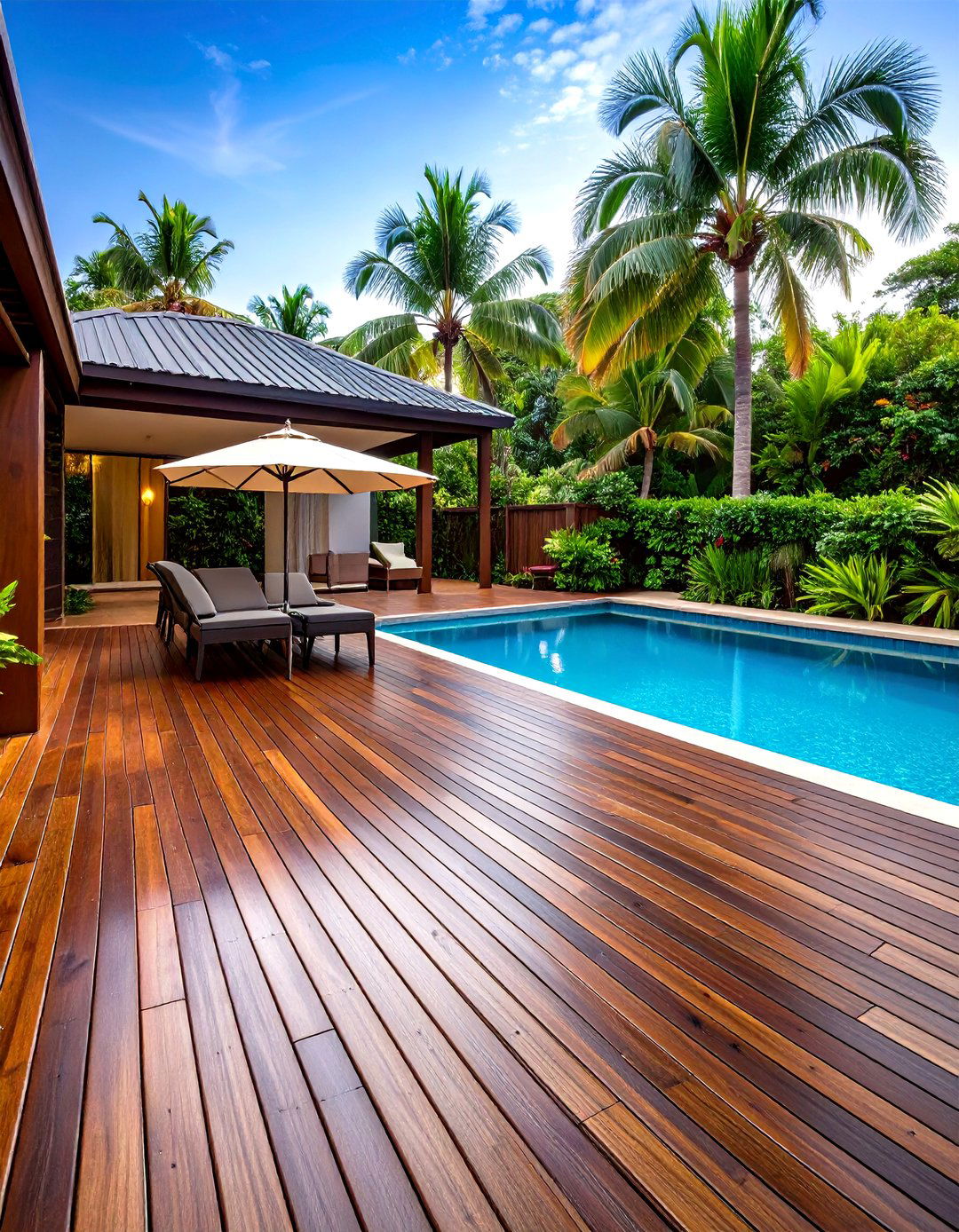
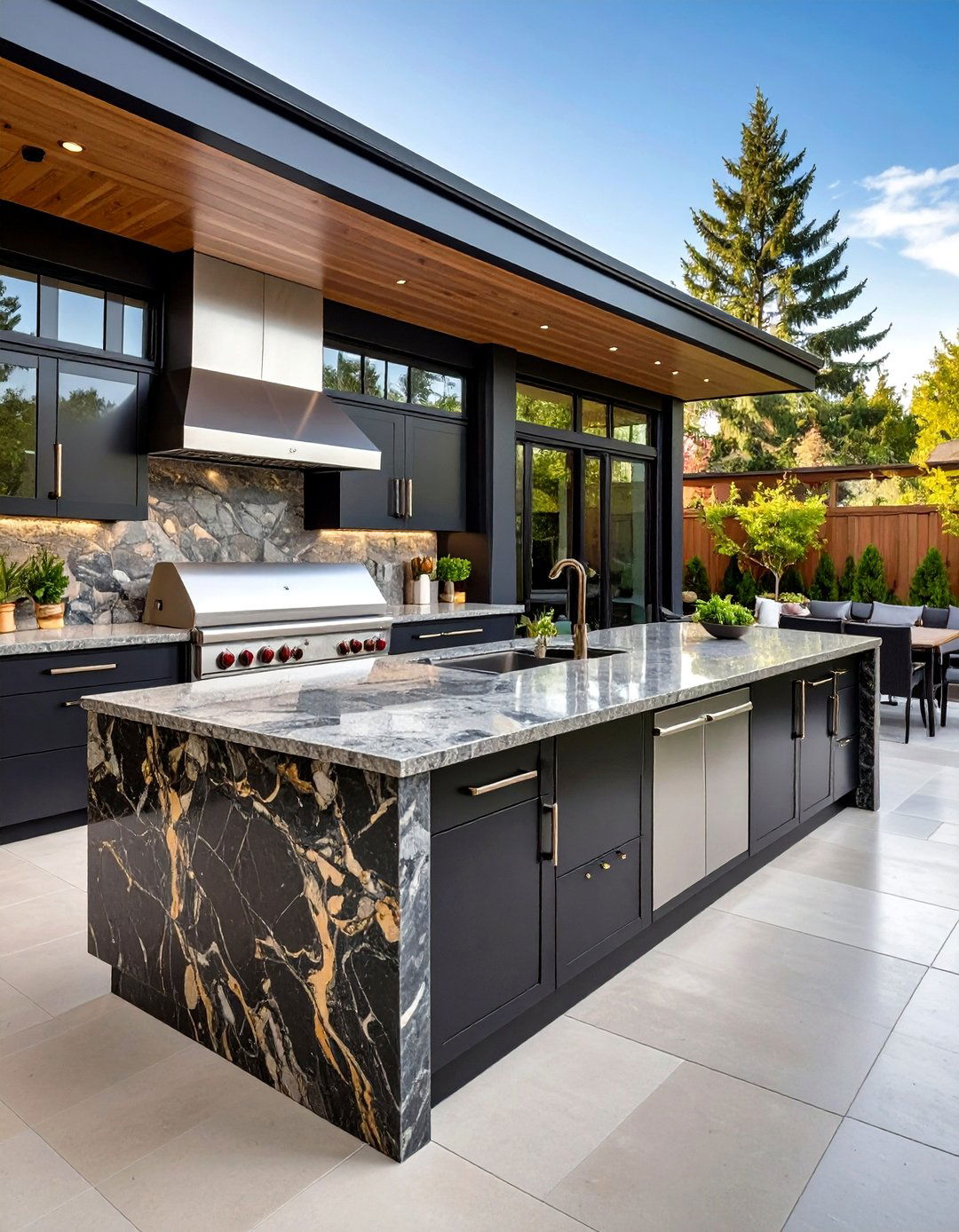
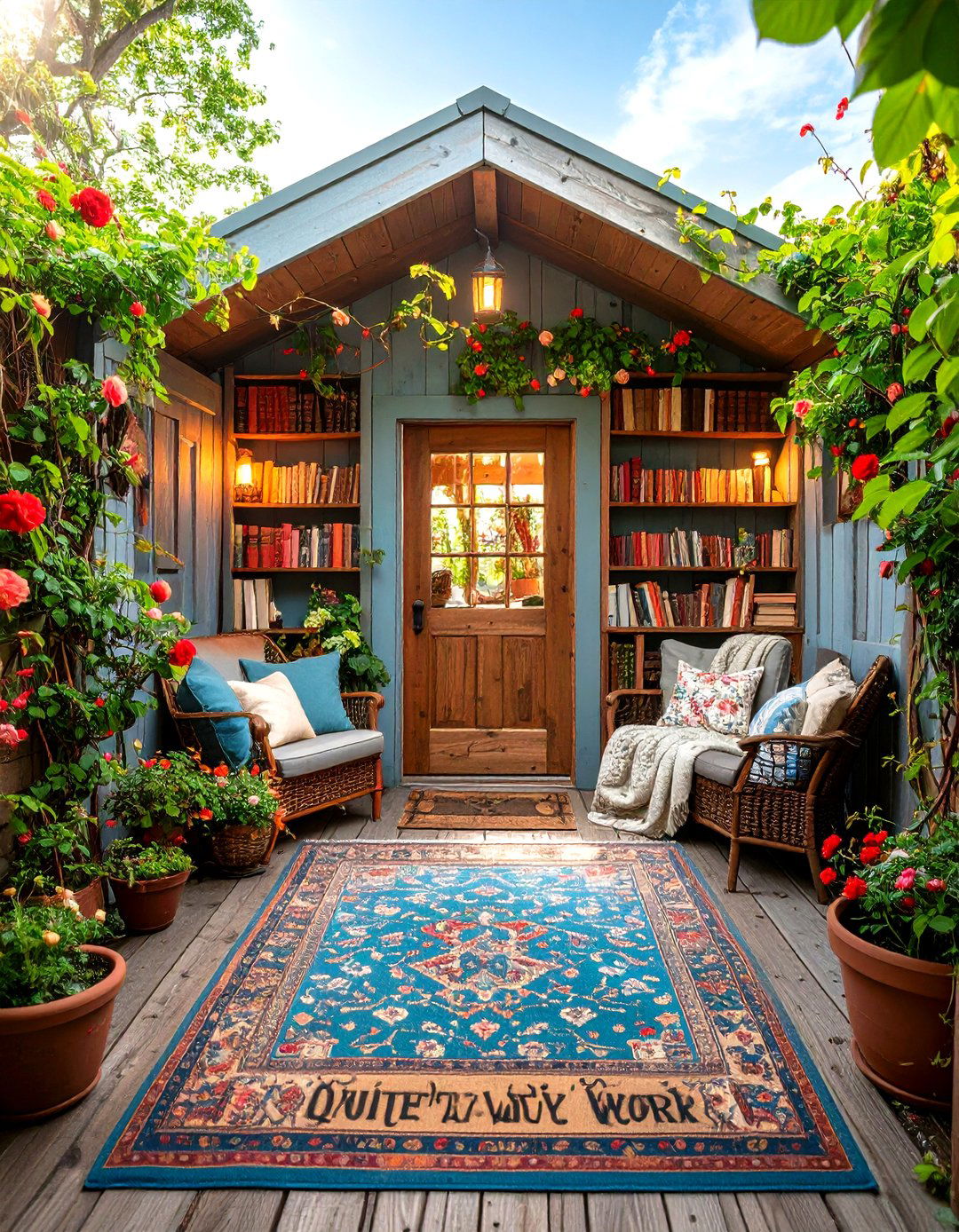
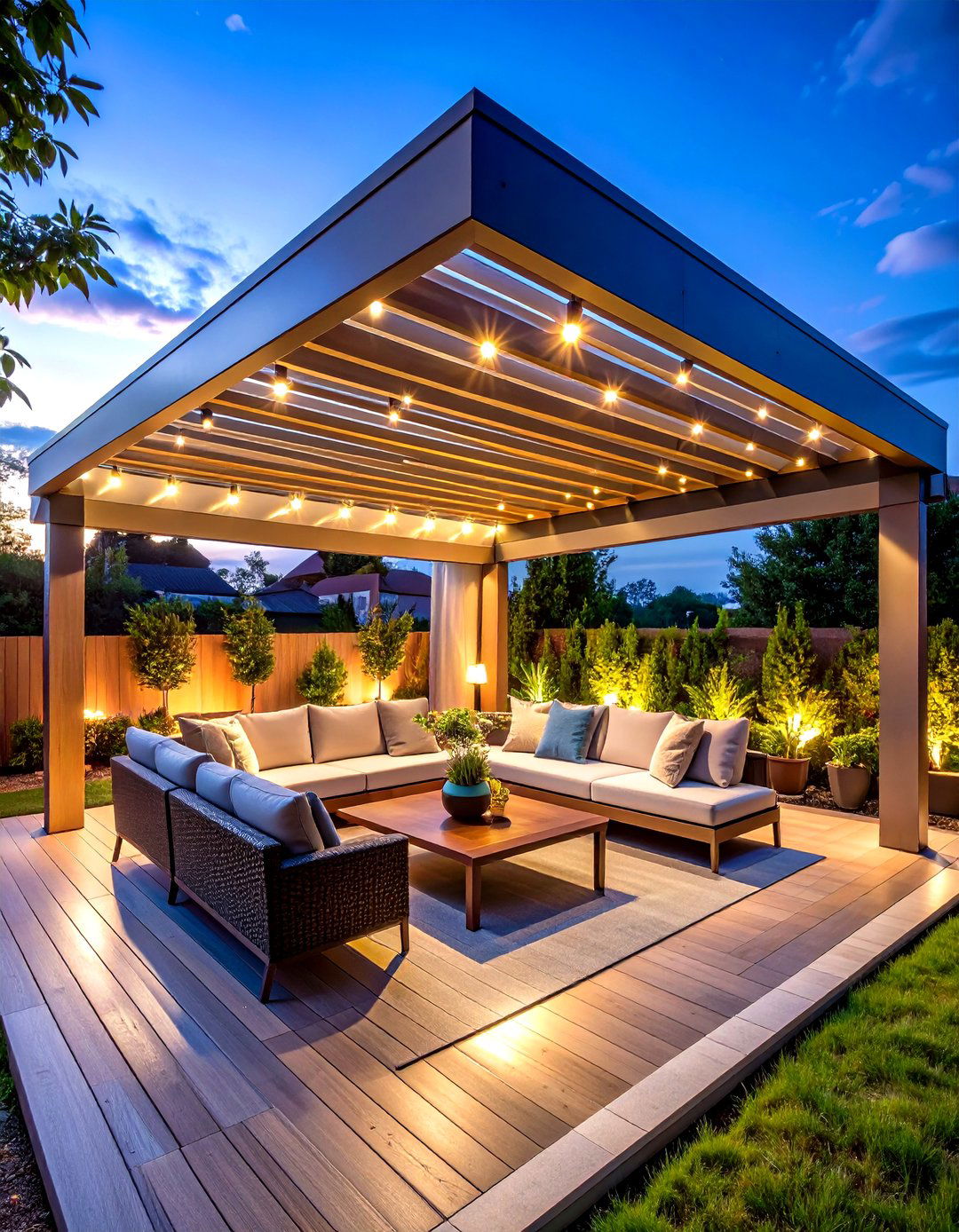
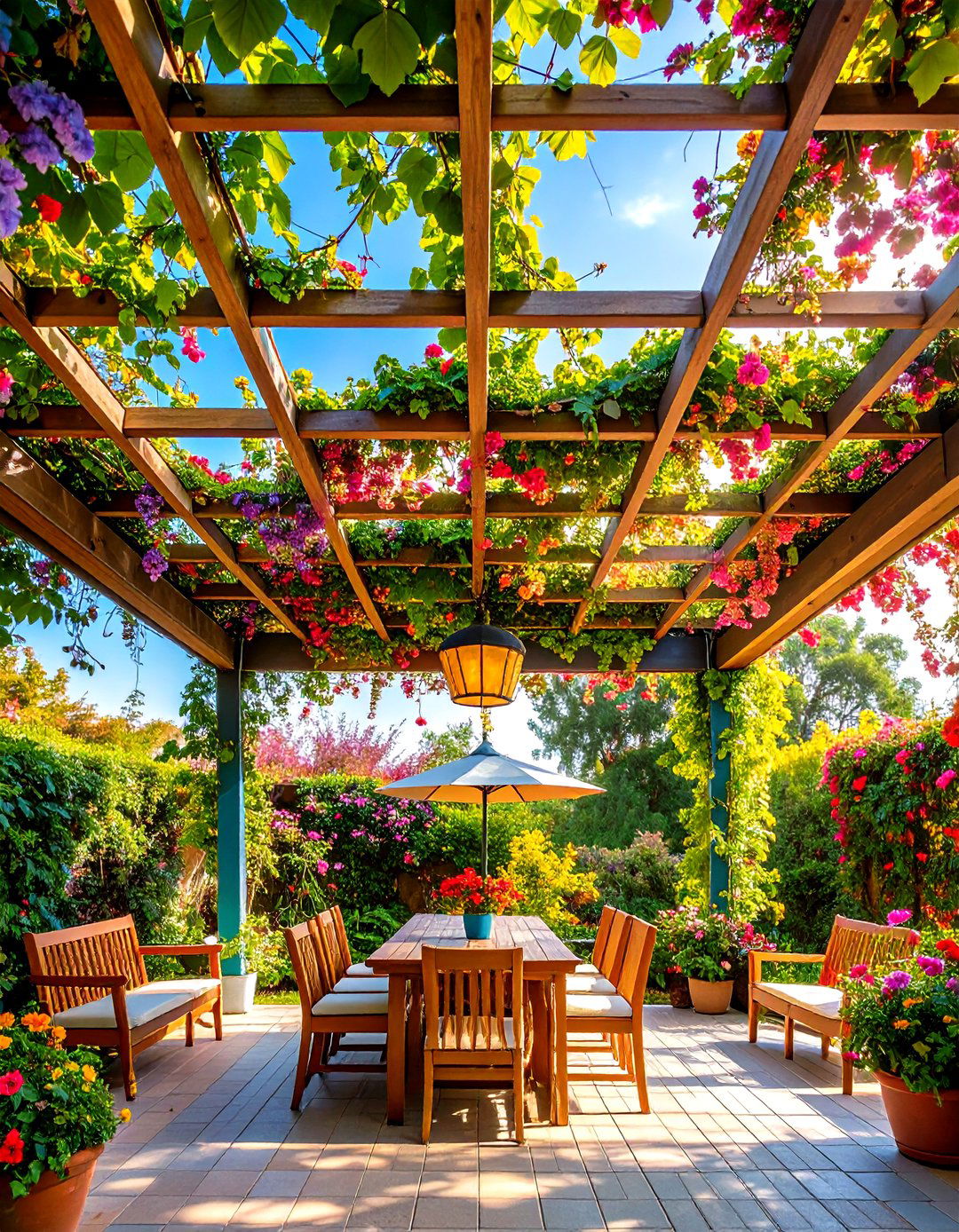

Leave a Reply